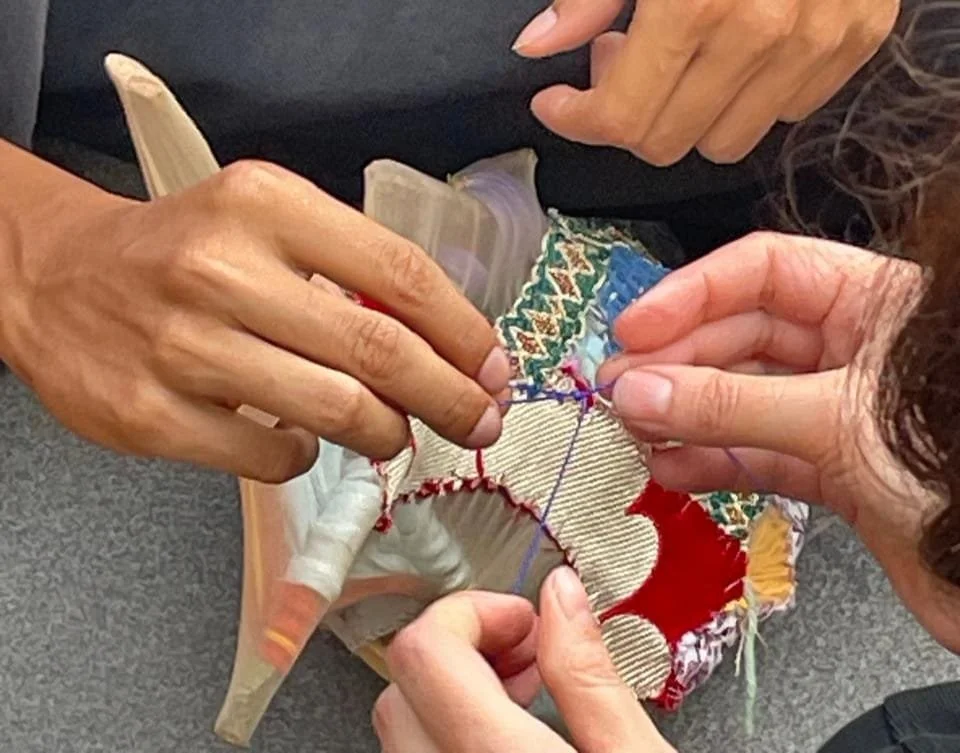

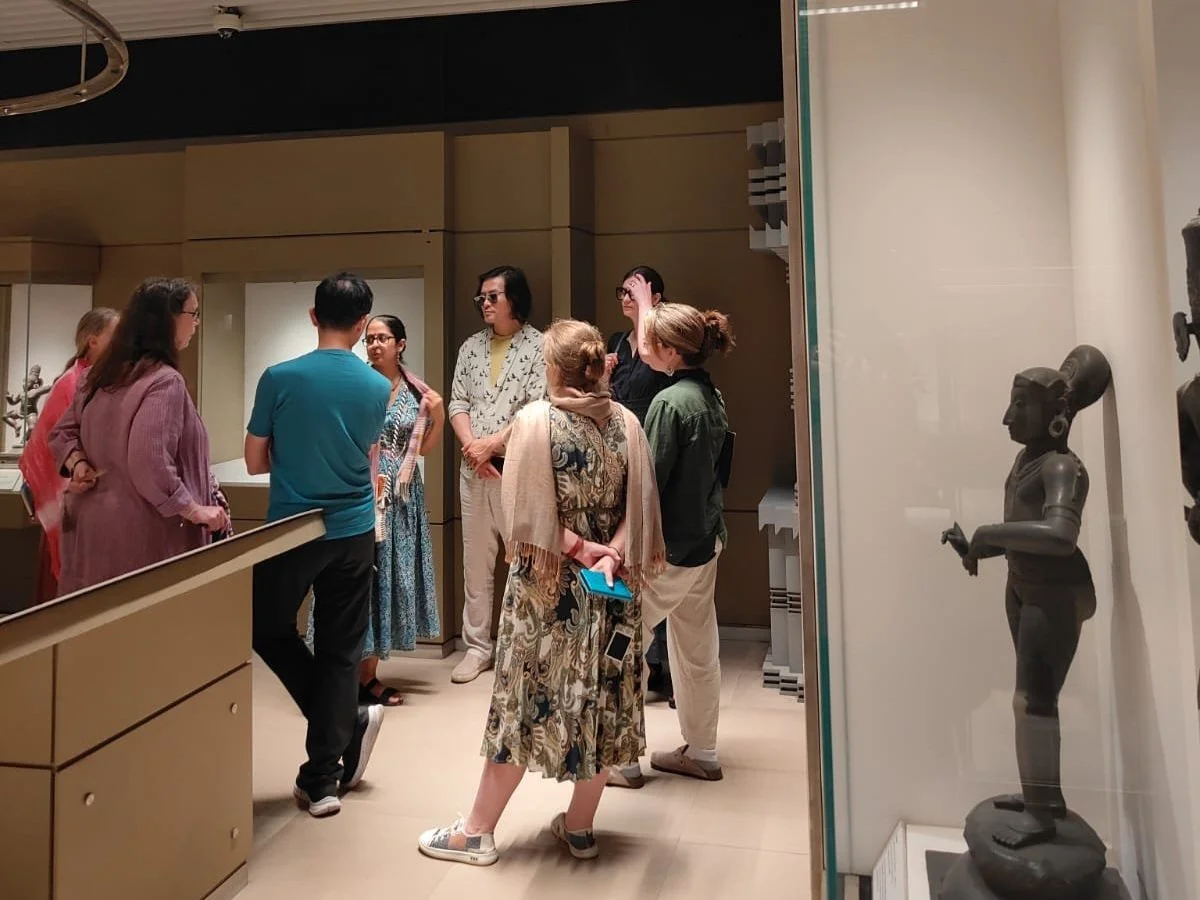

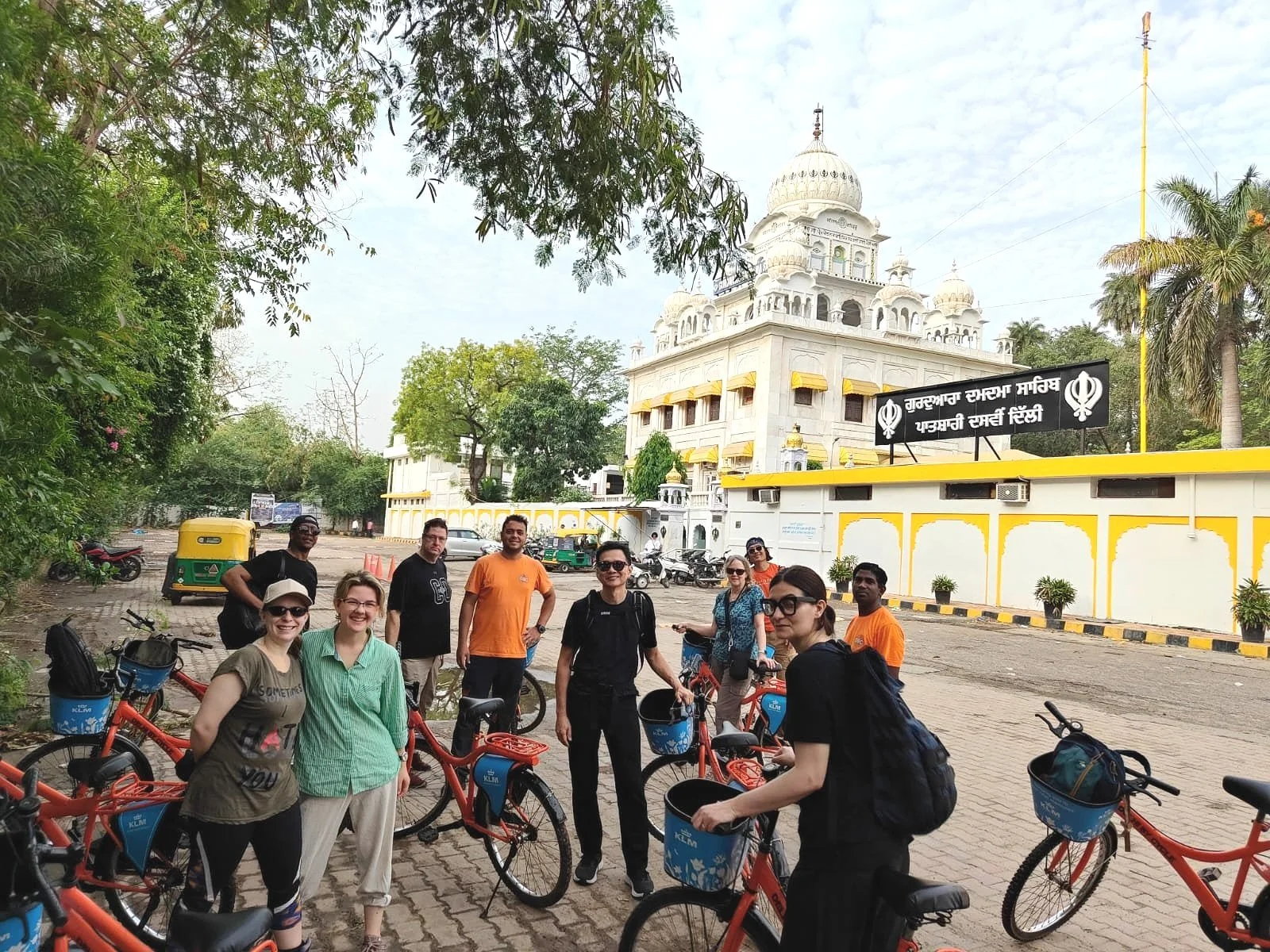
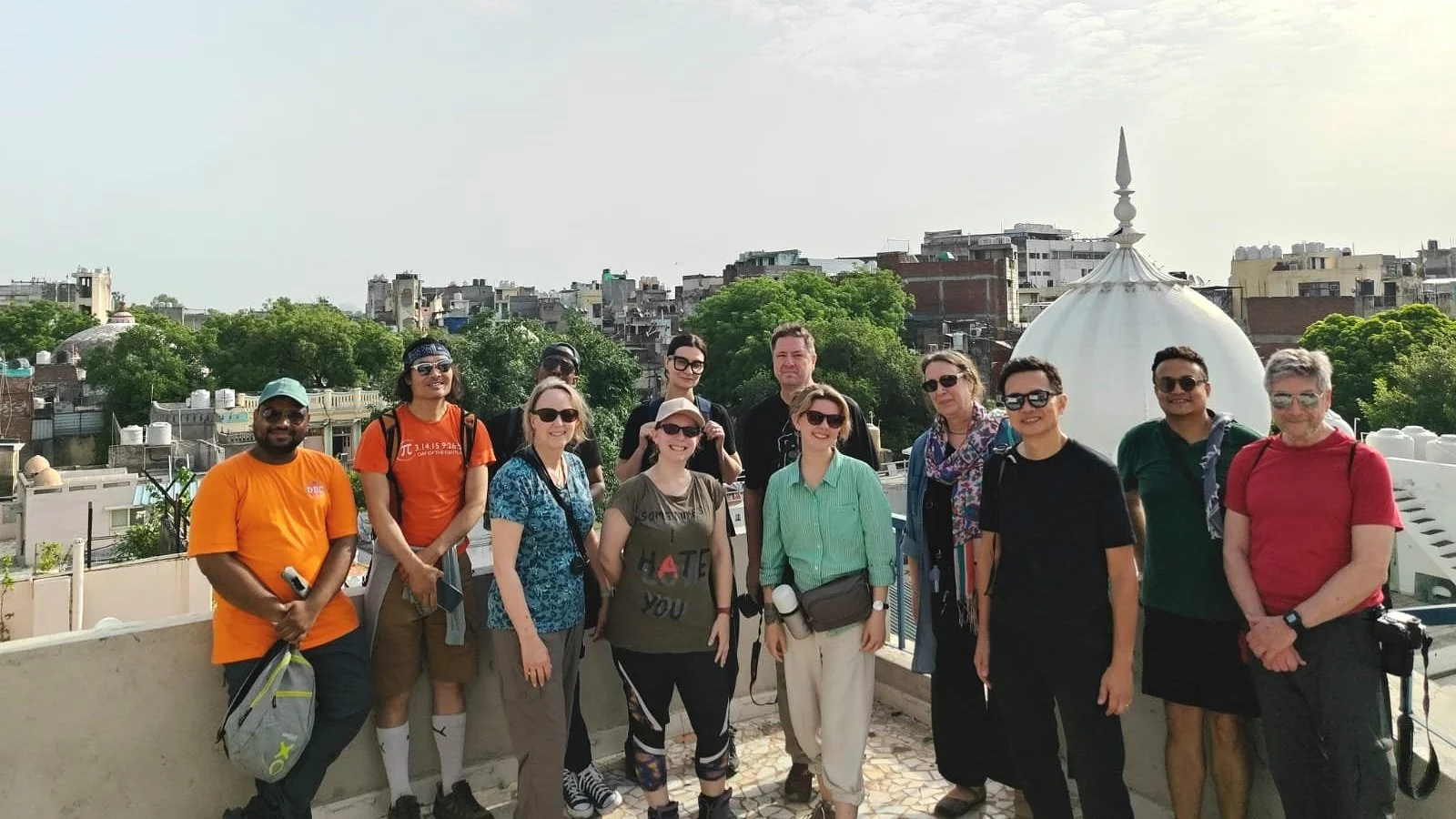
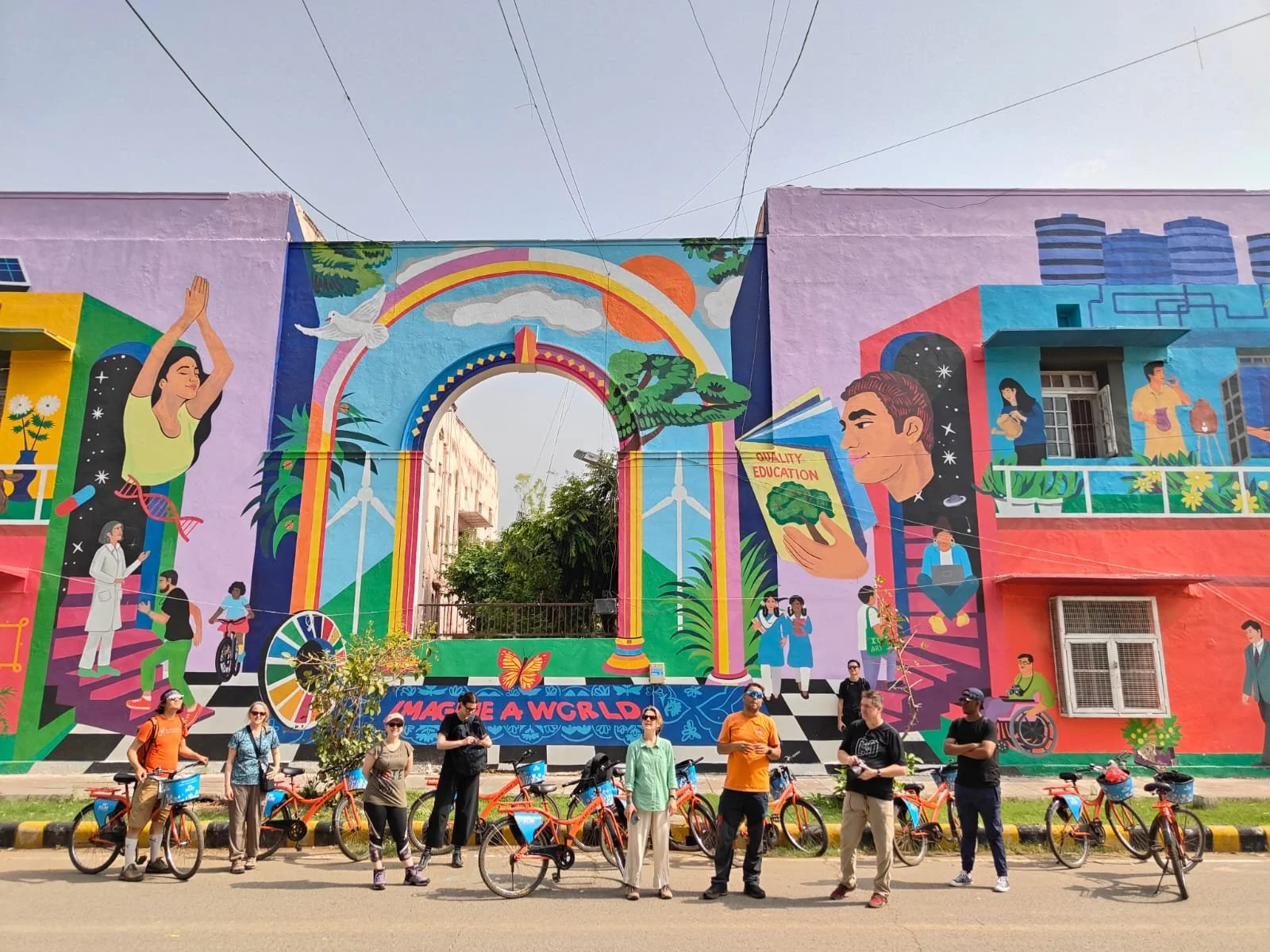
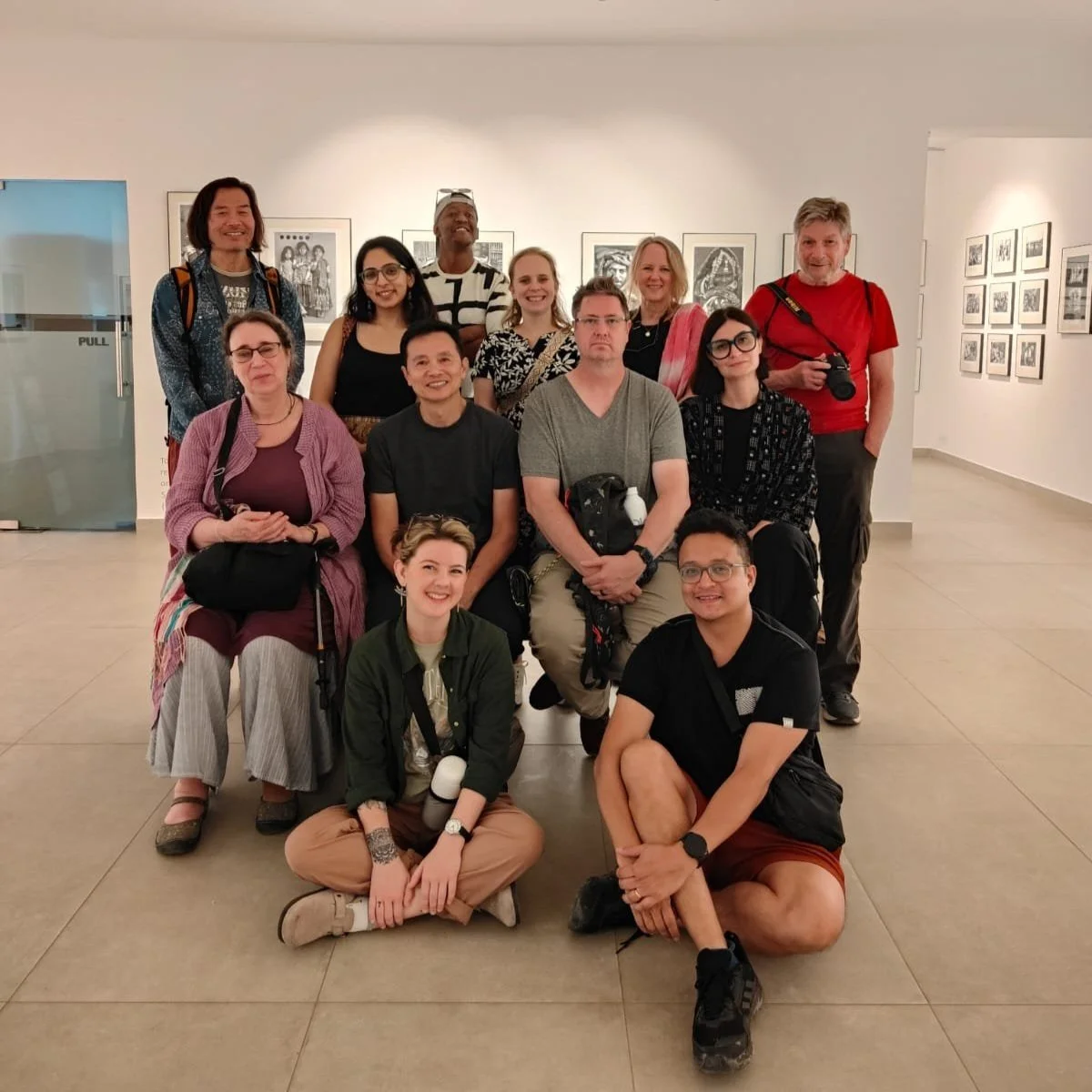
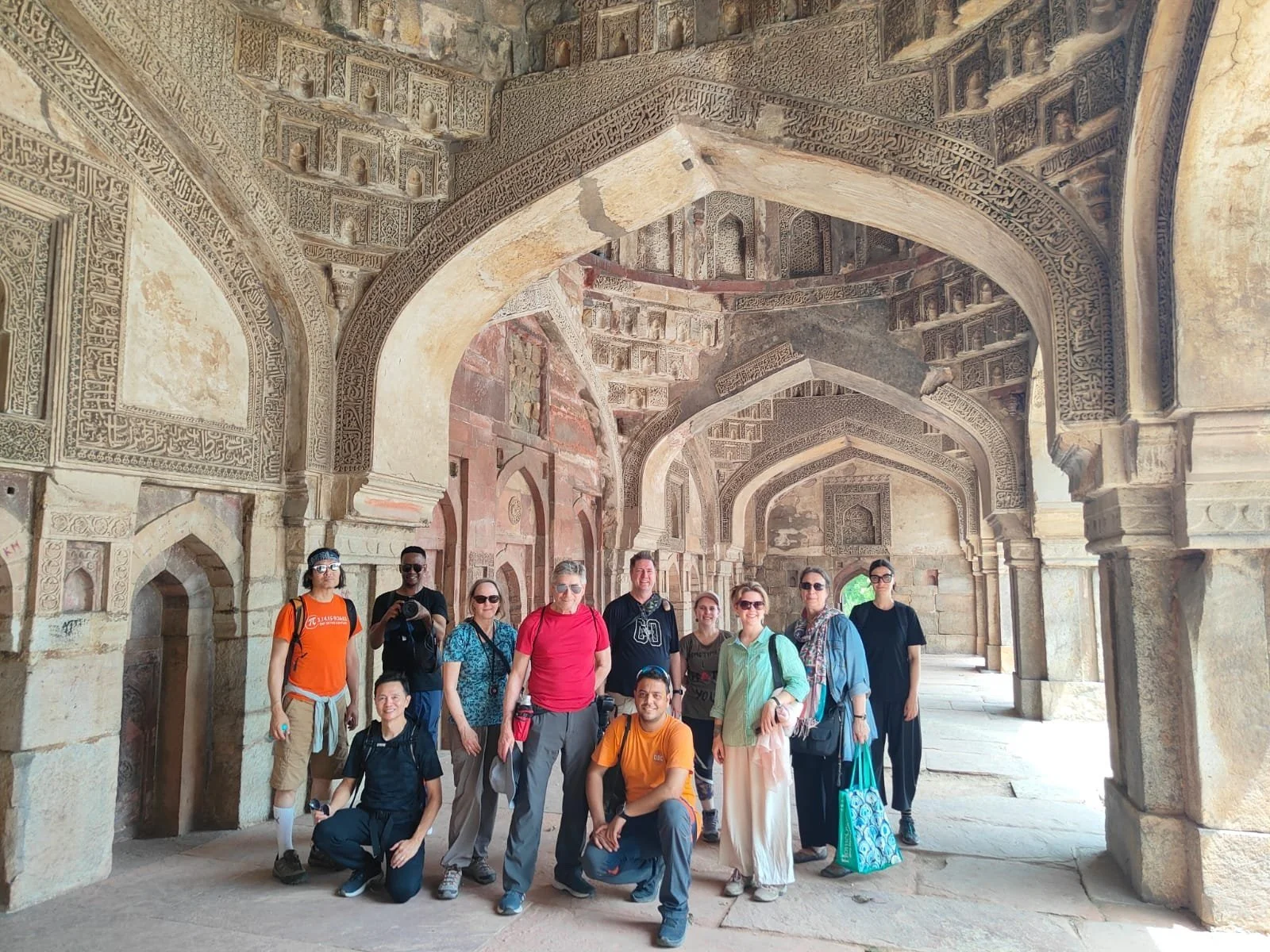

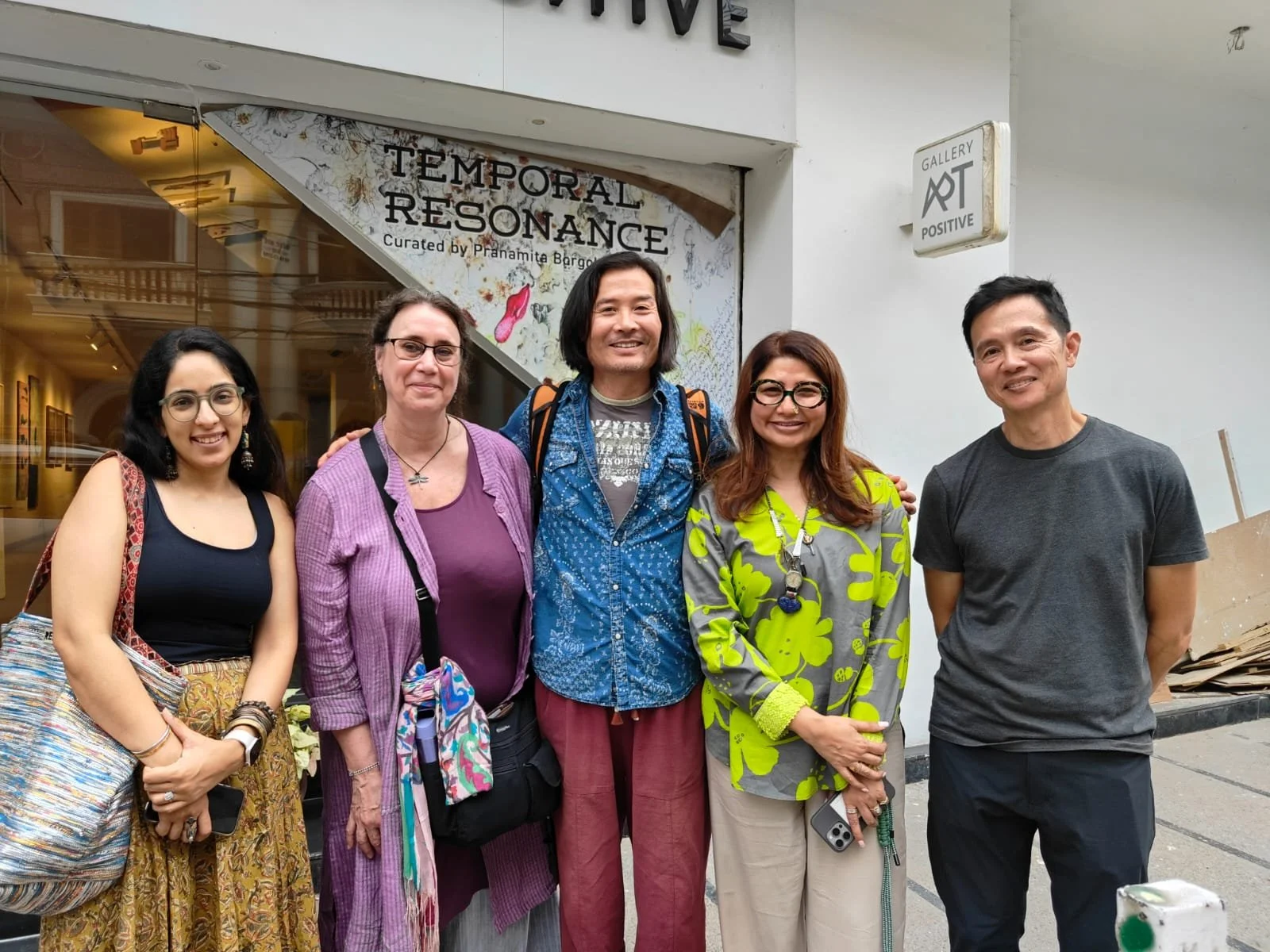

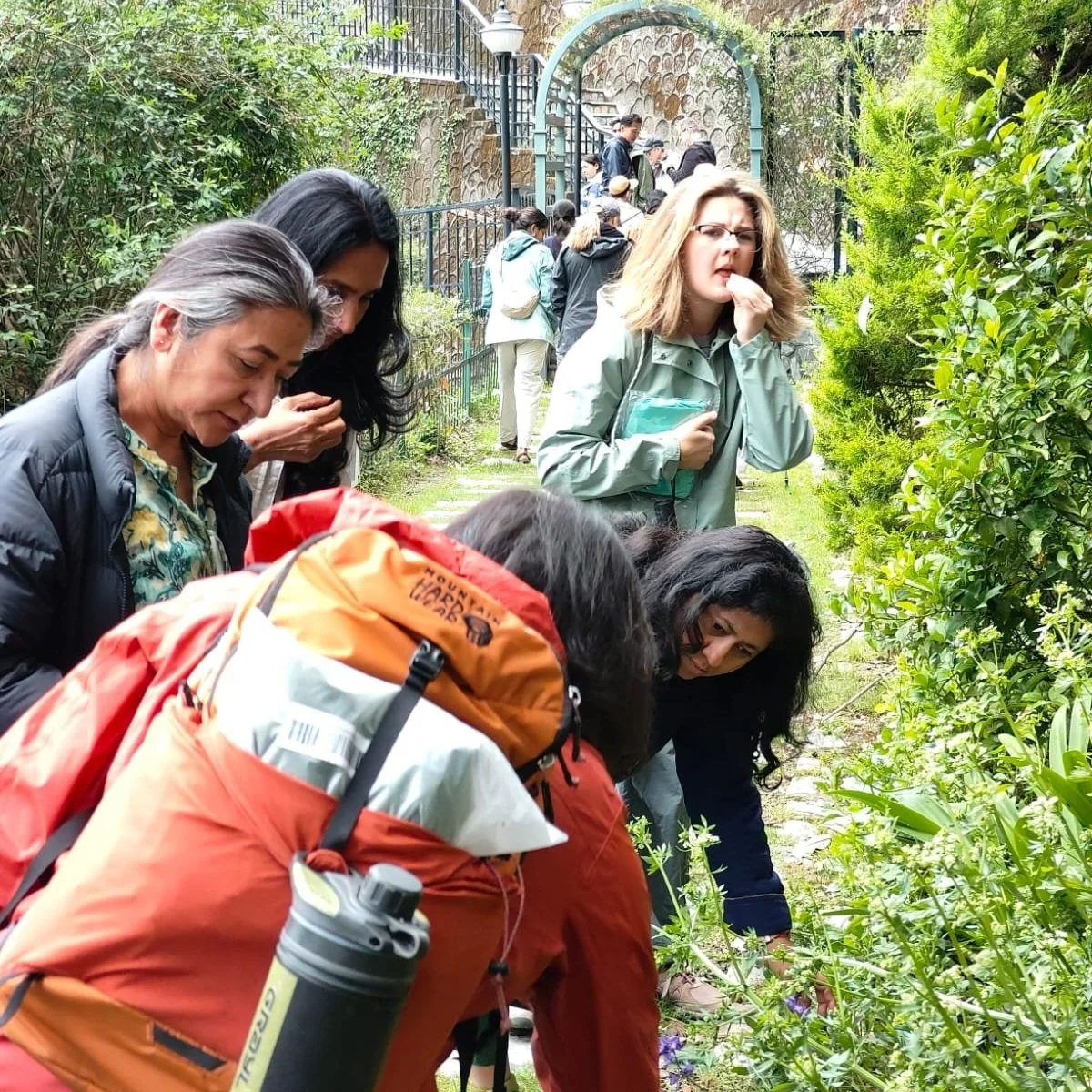
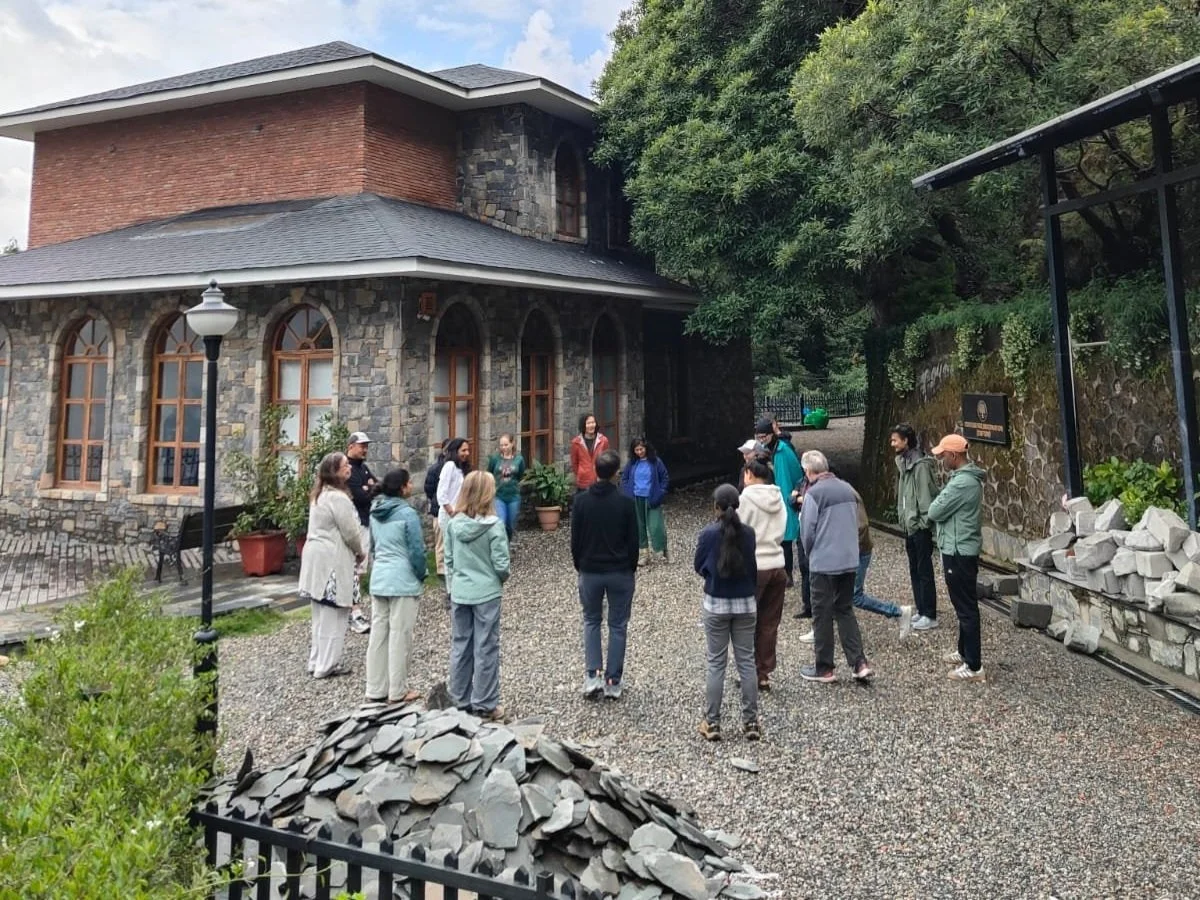
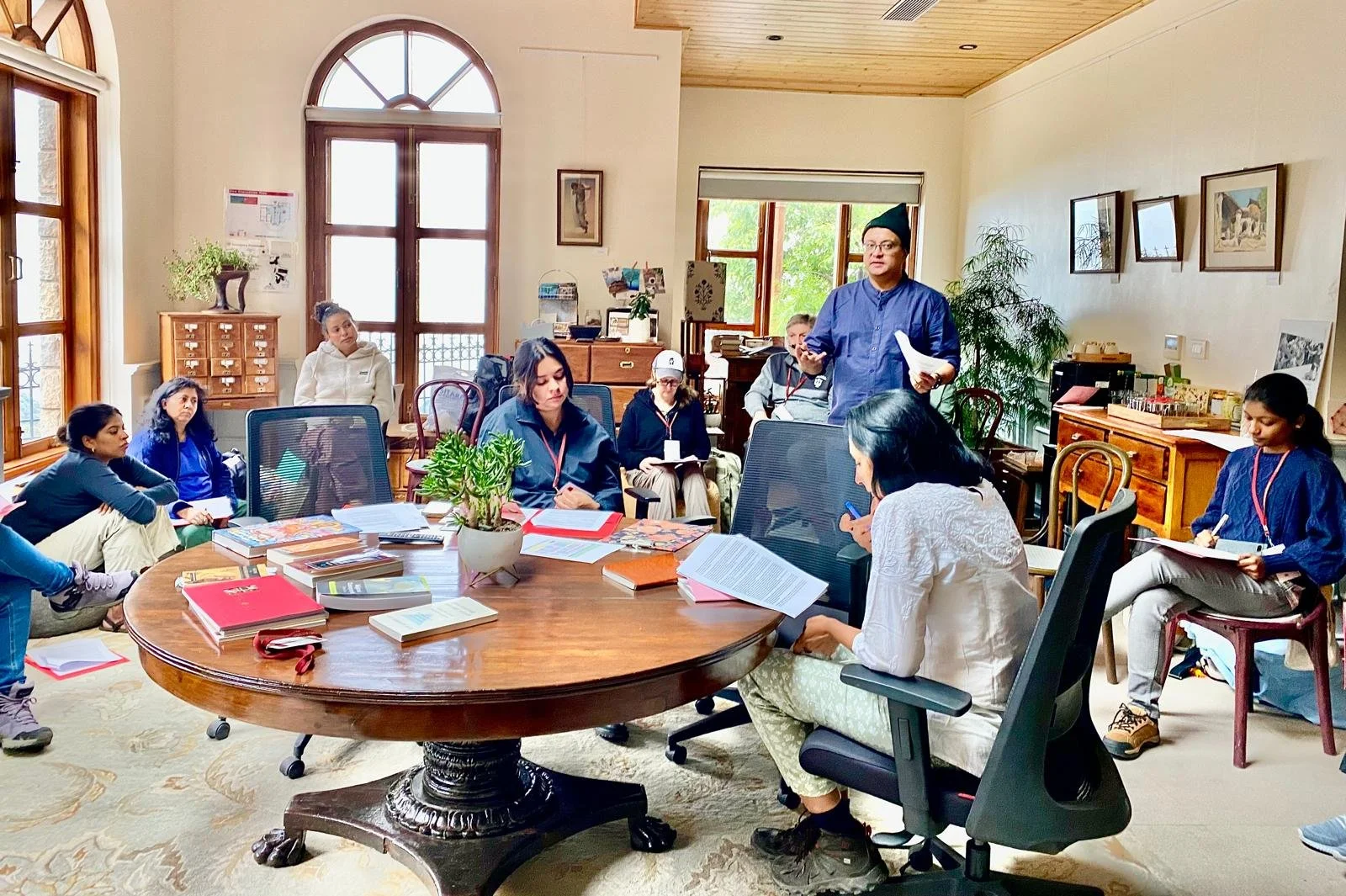
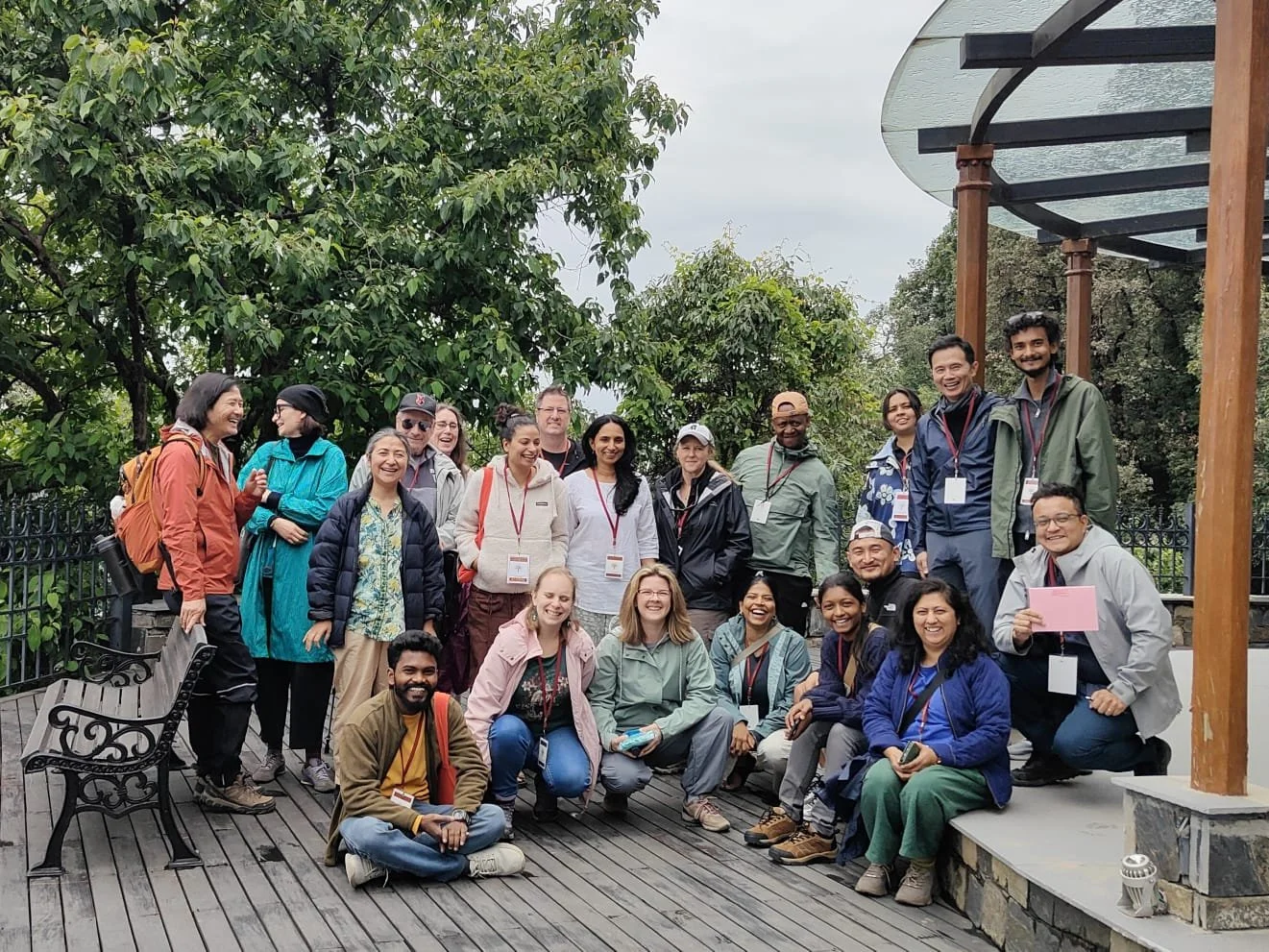
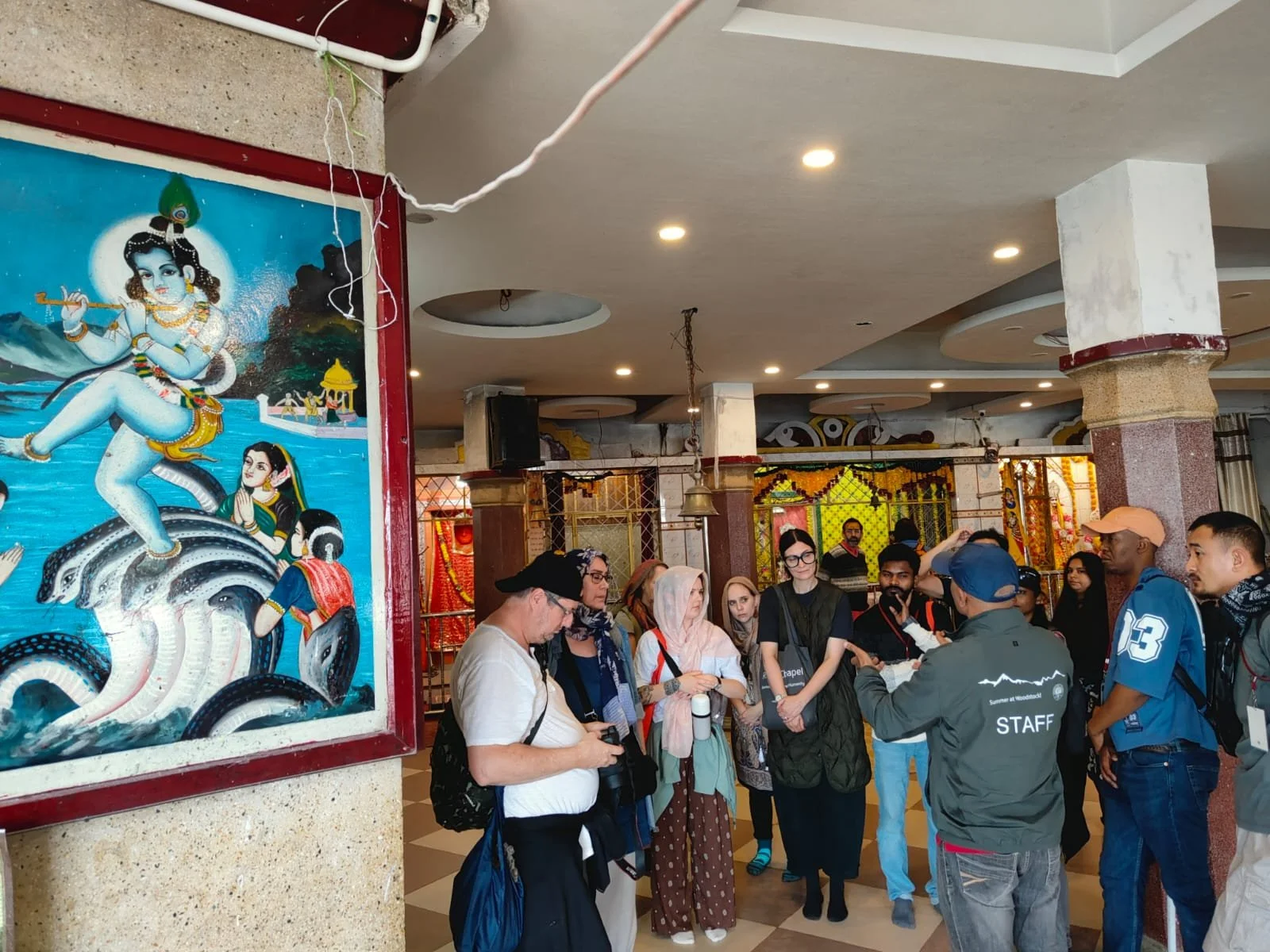

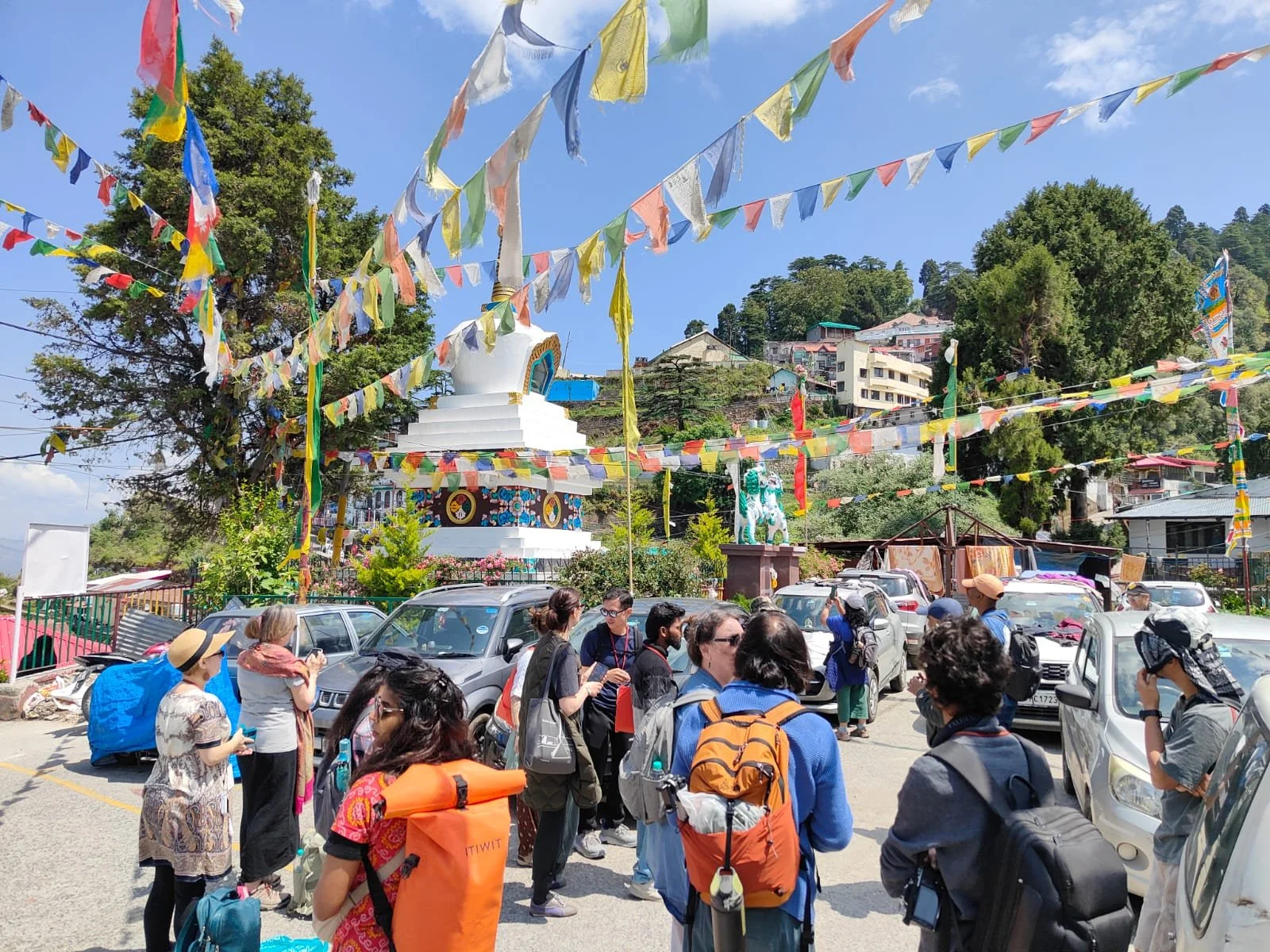
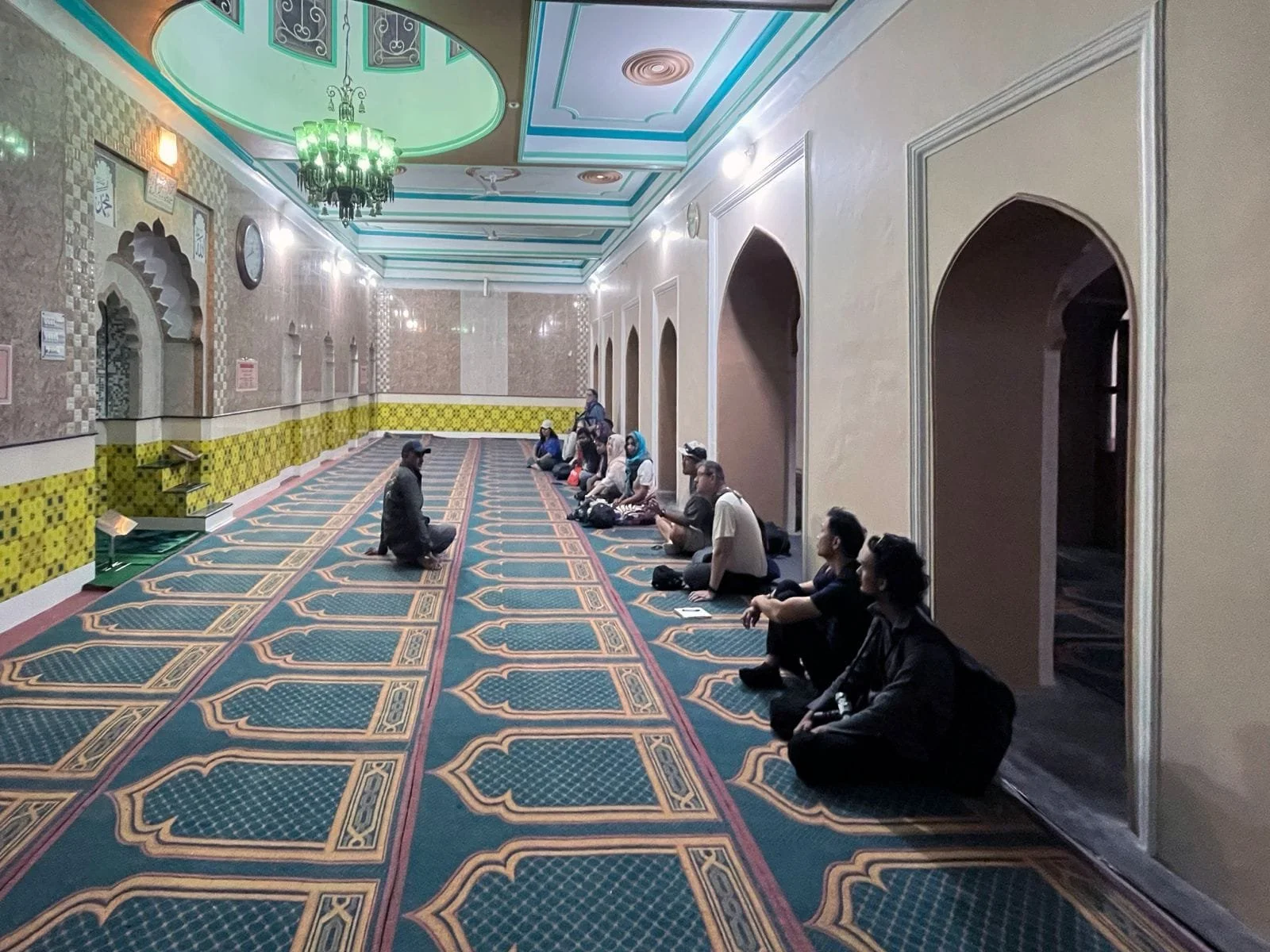
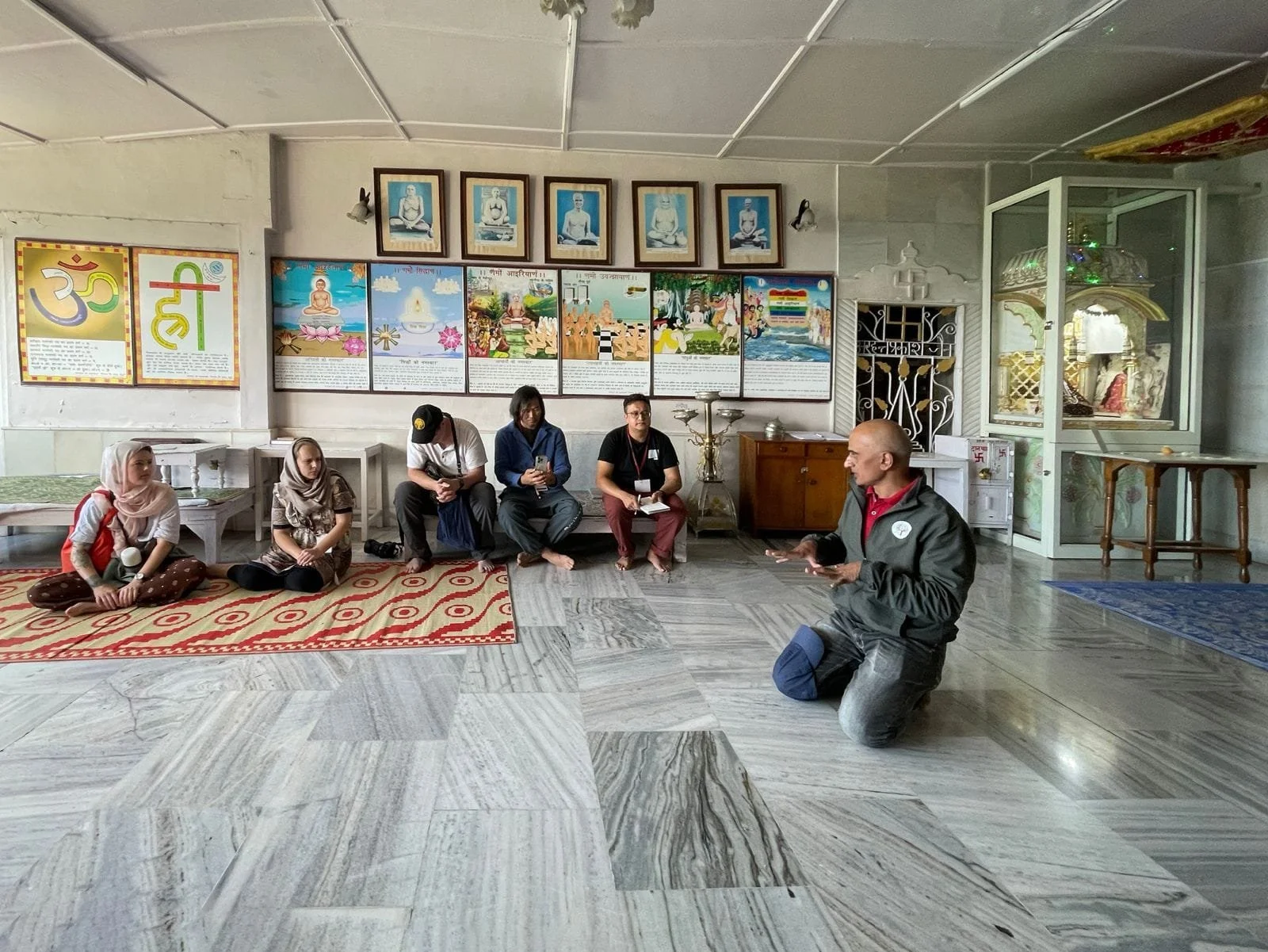
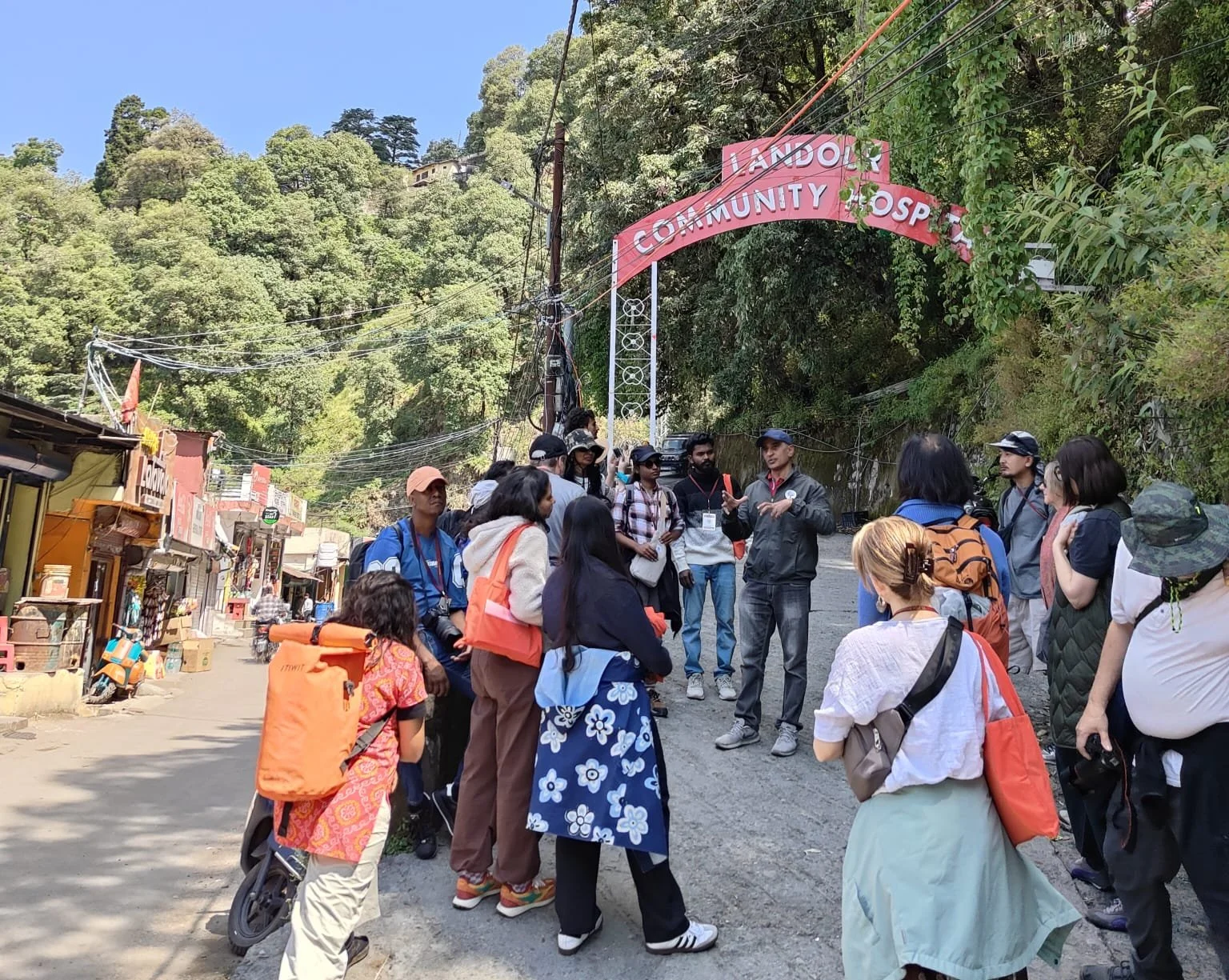
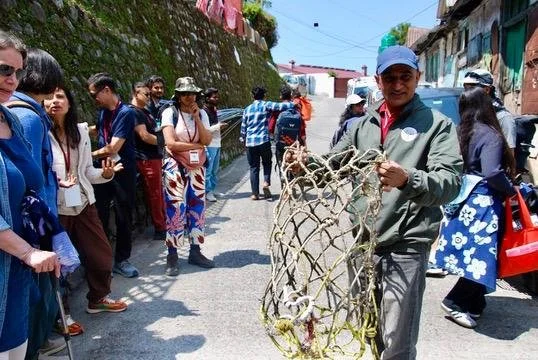
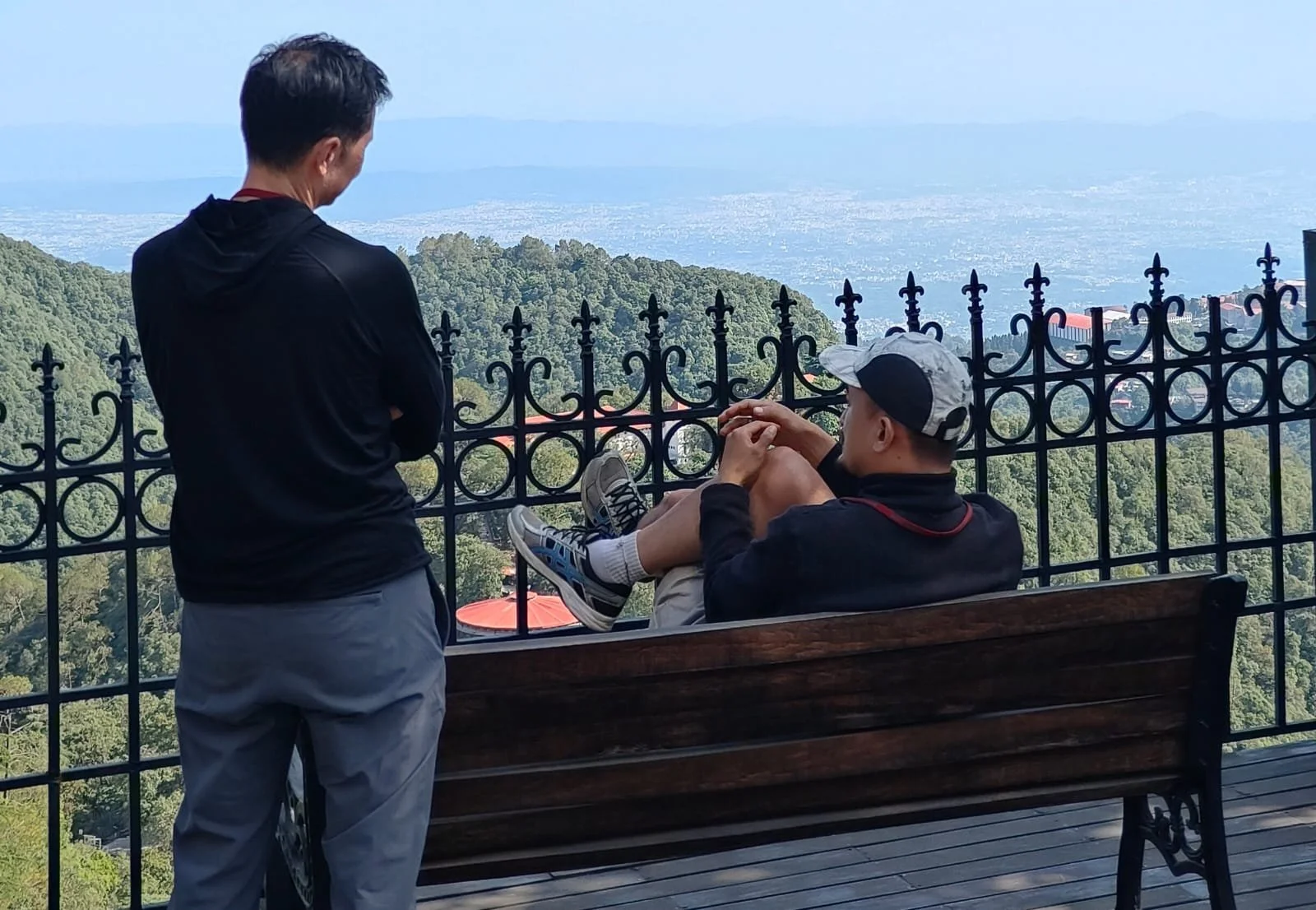


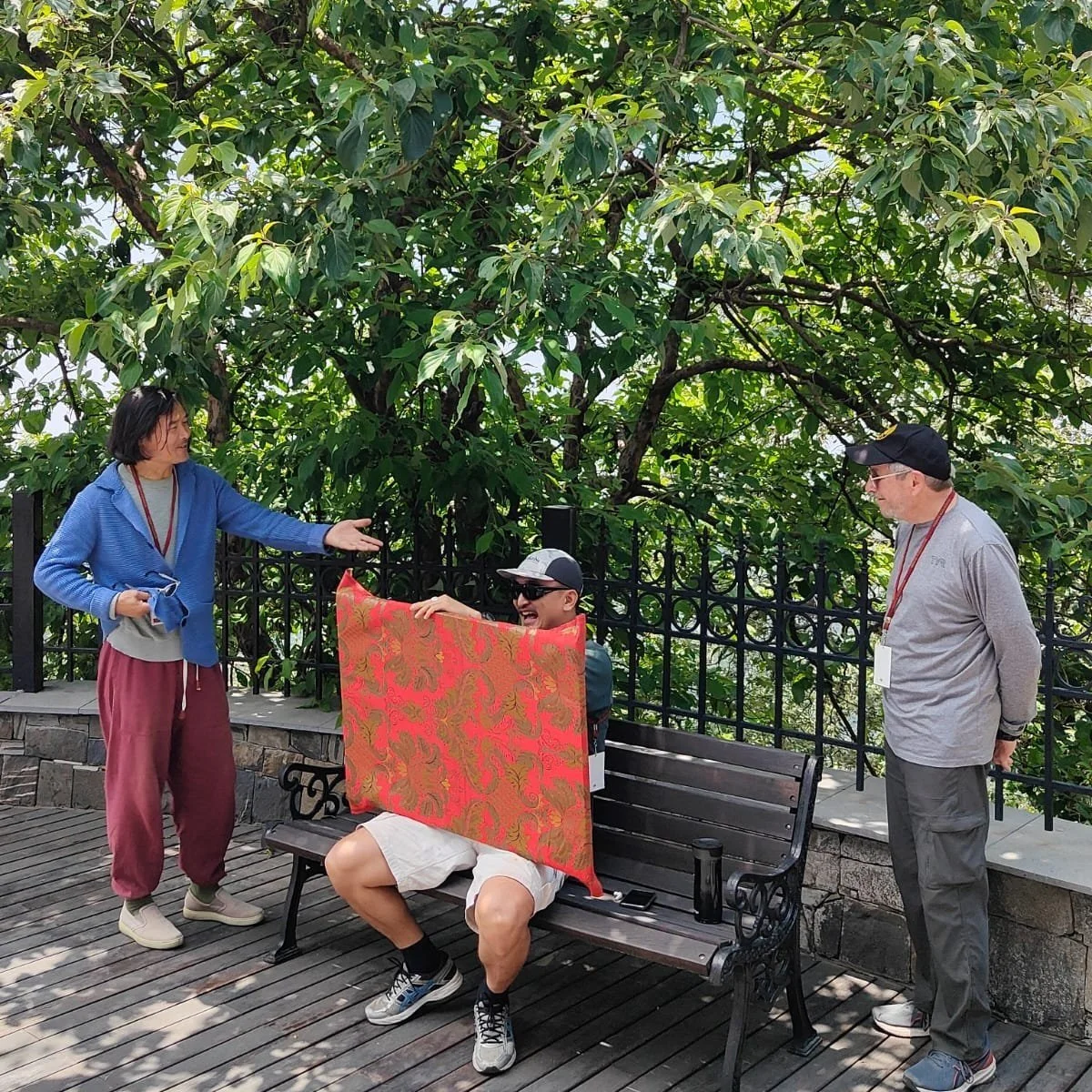



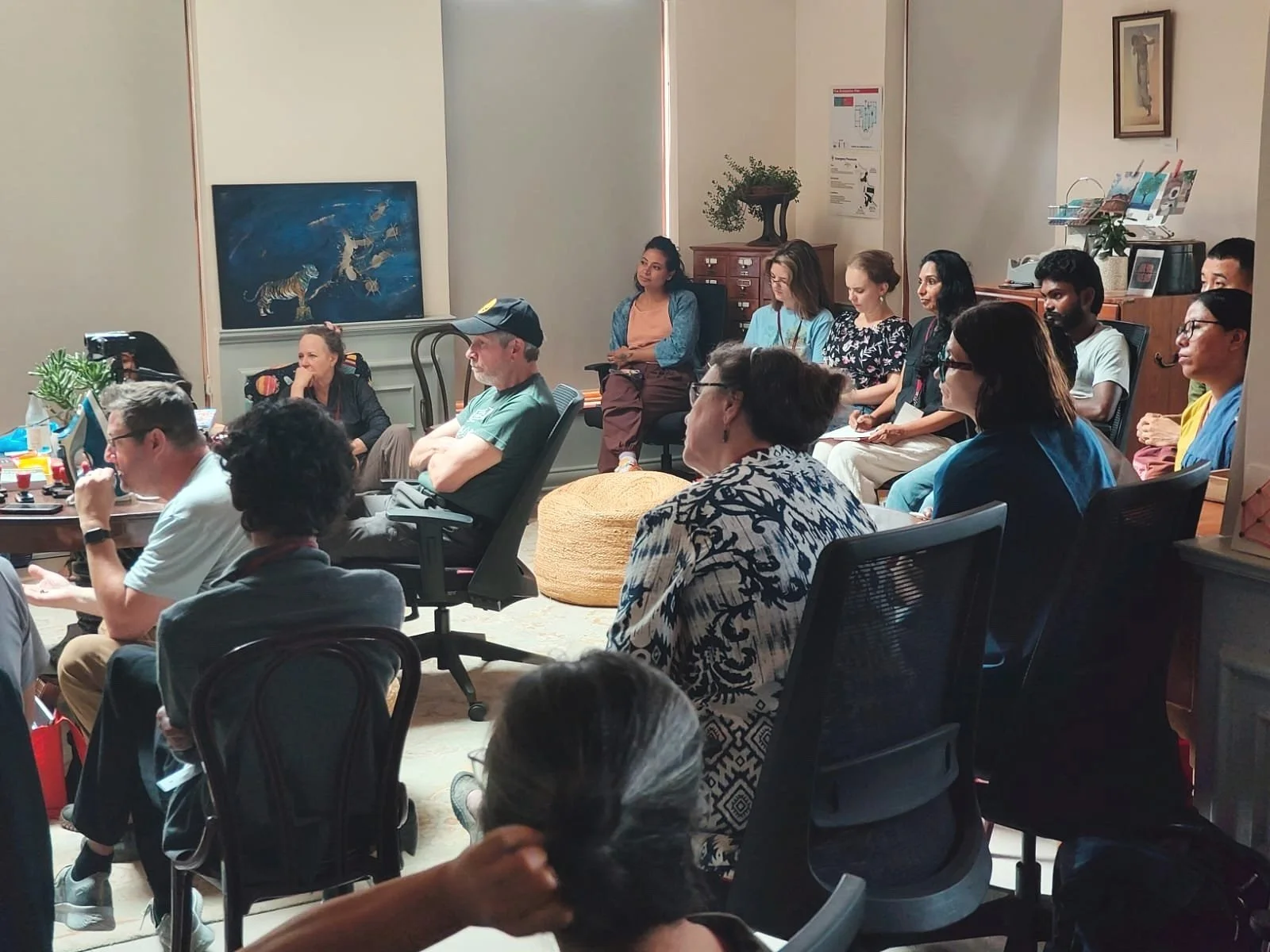
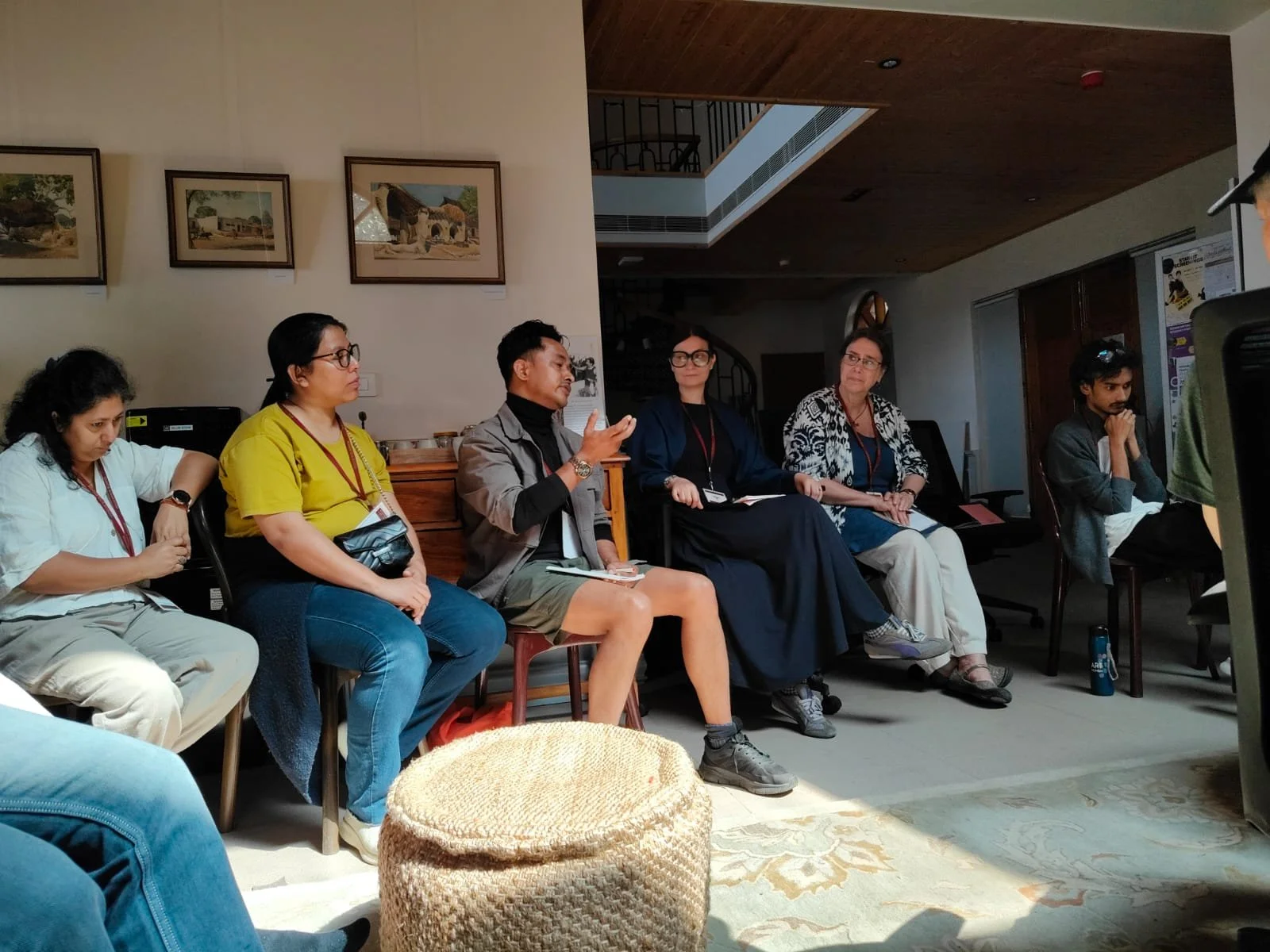


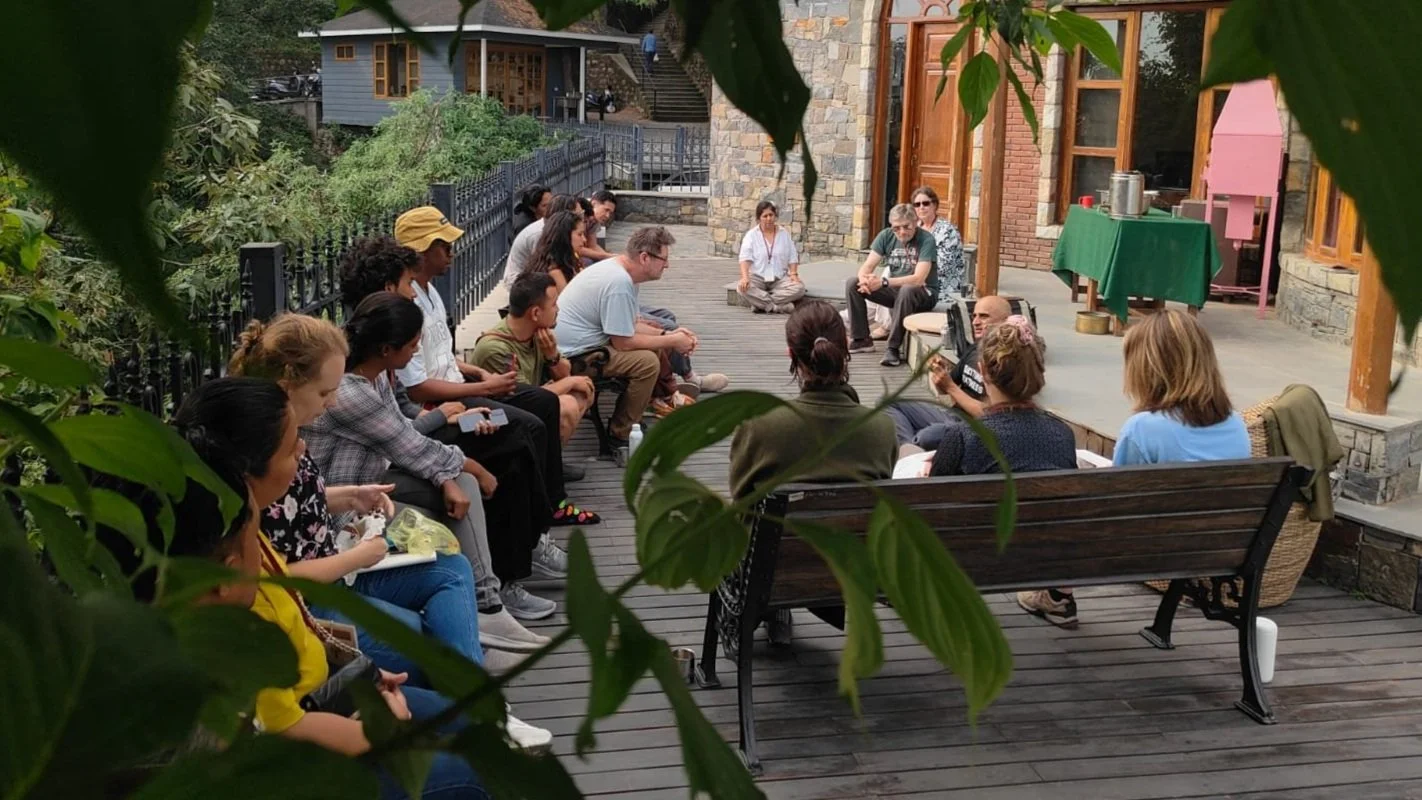
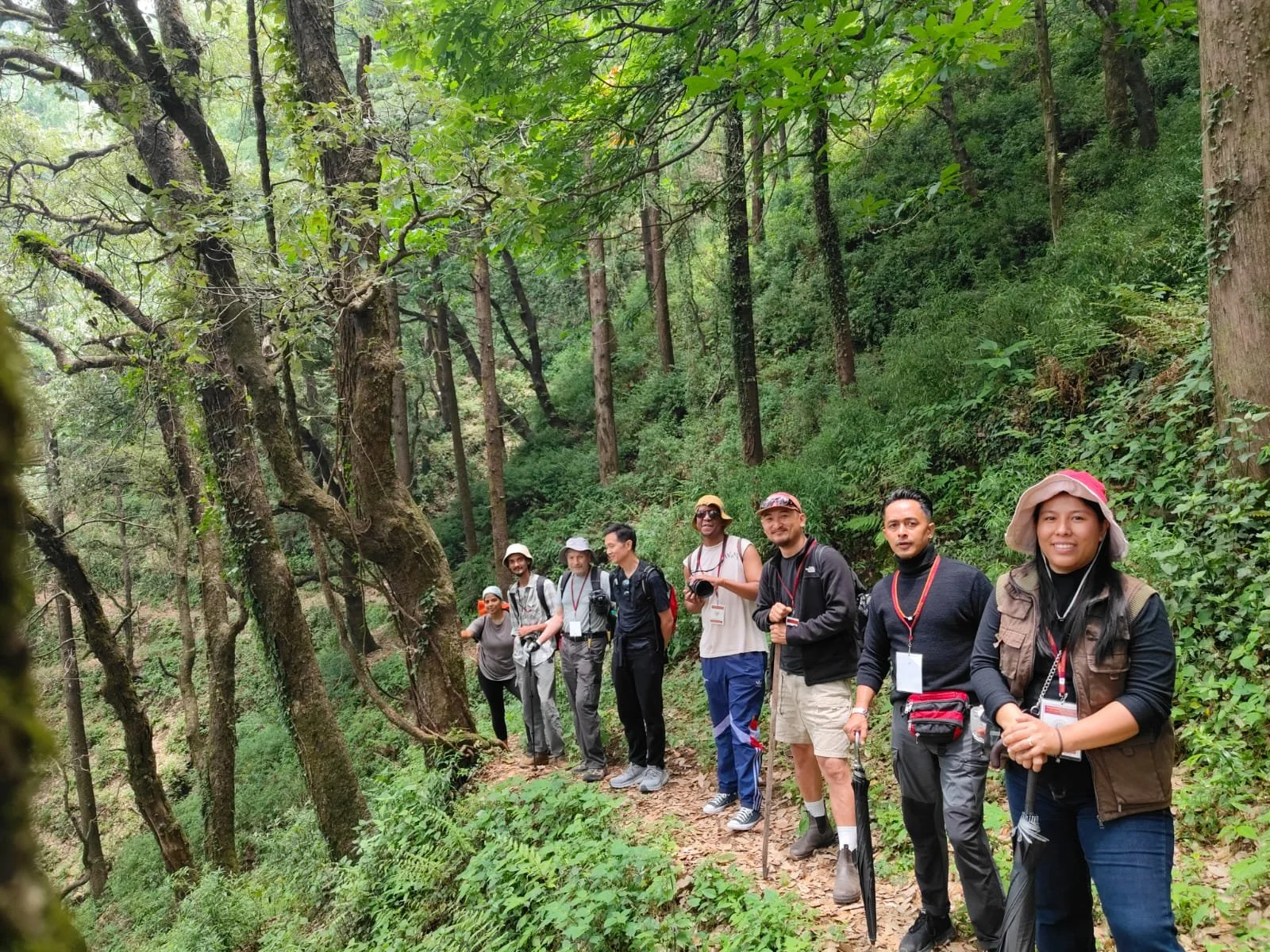
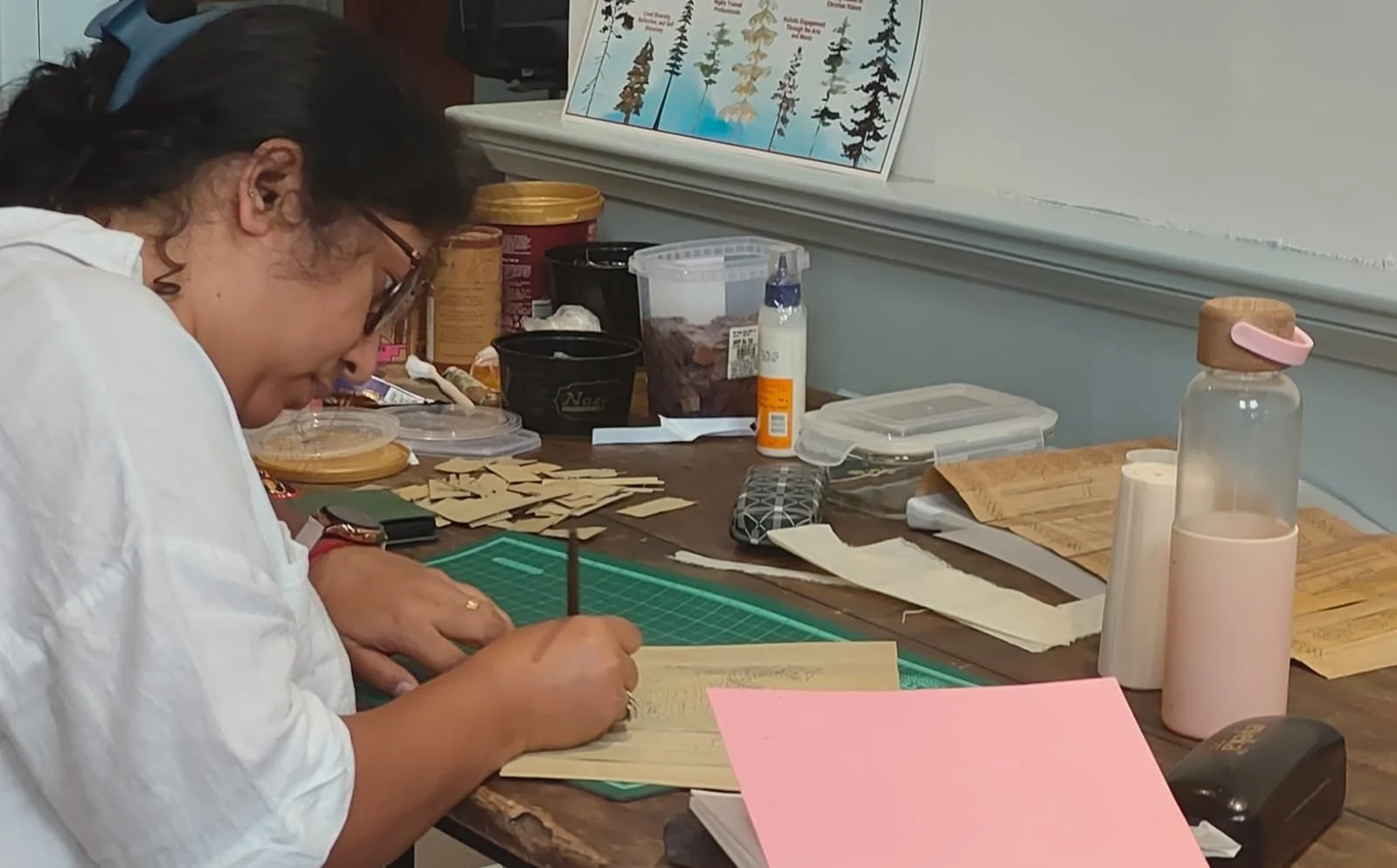
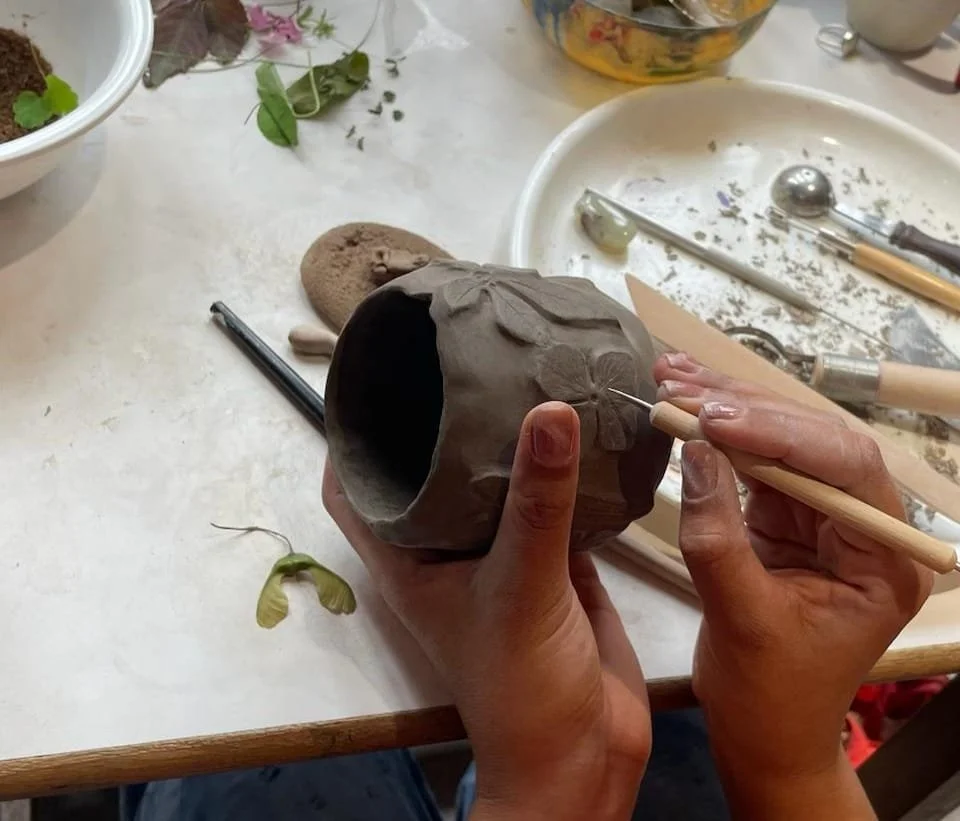


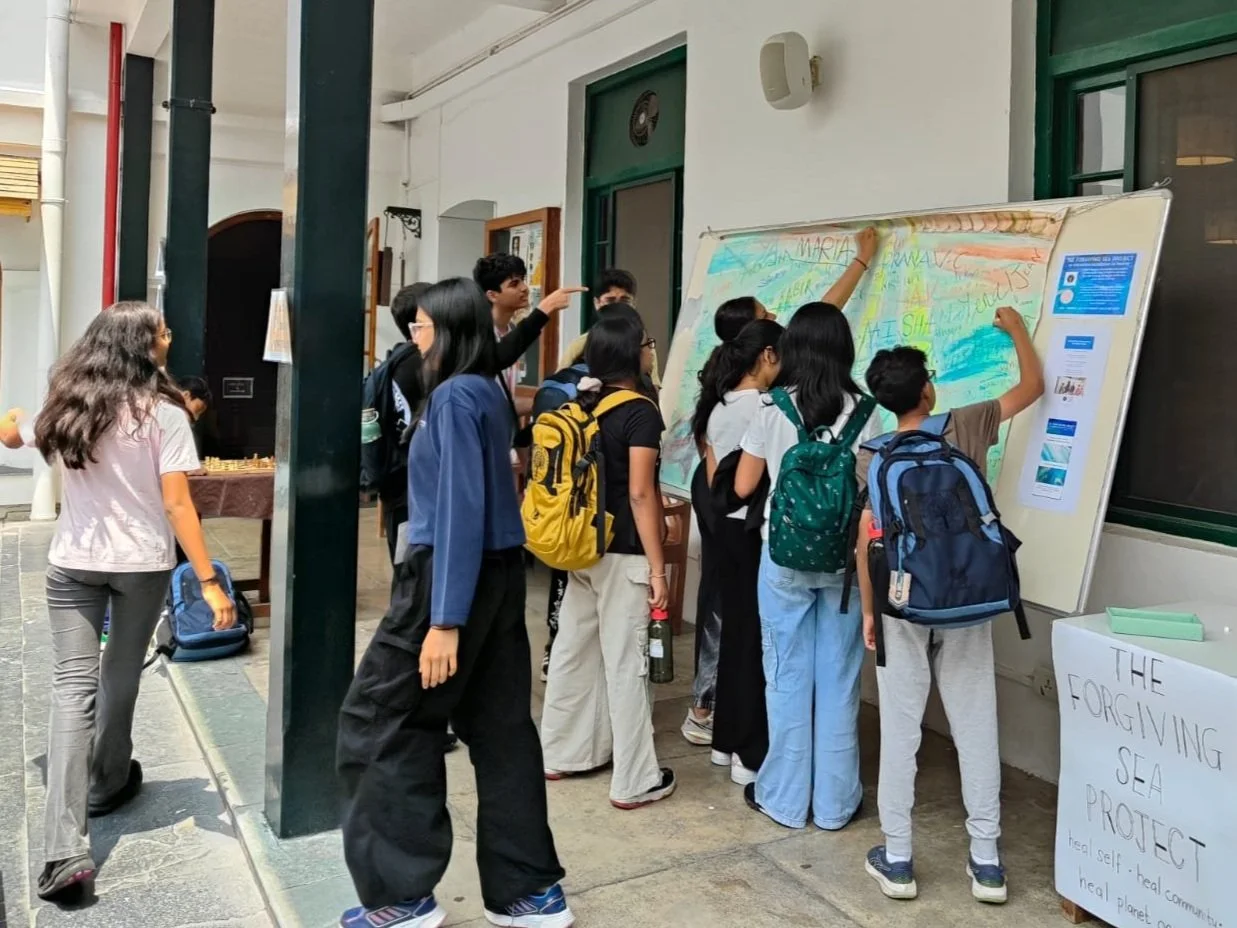



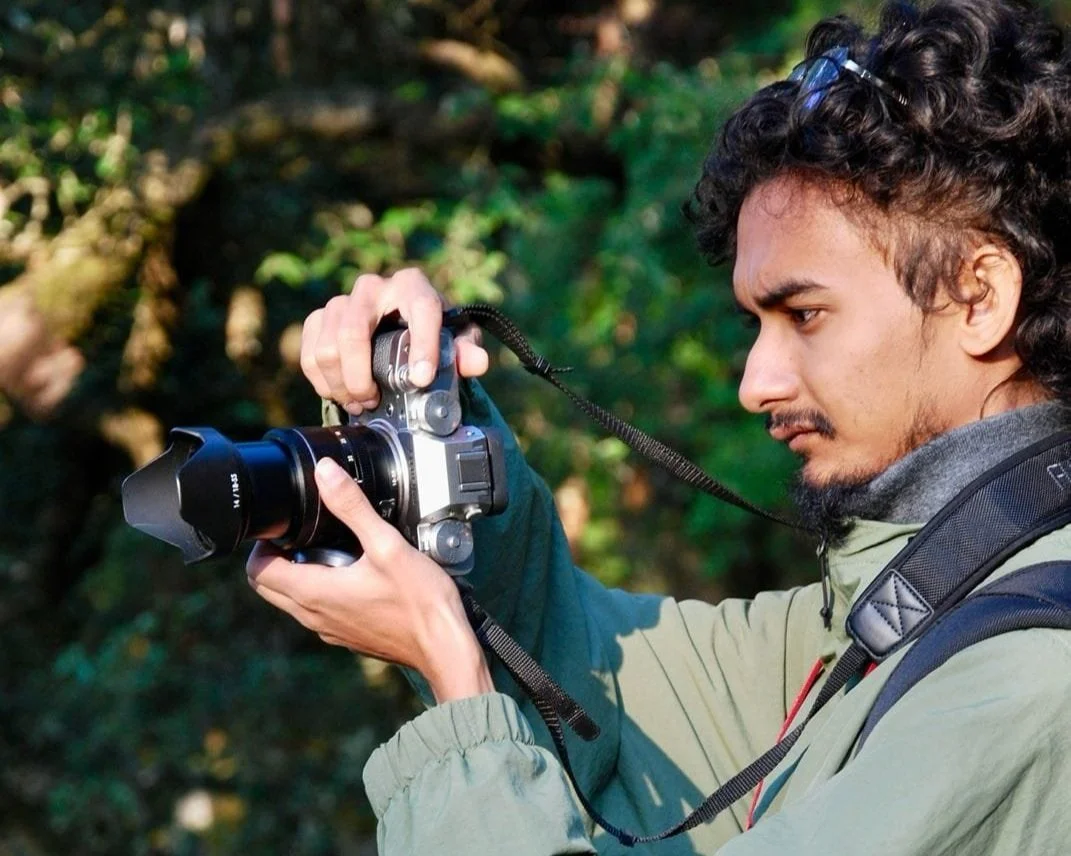
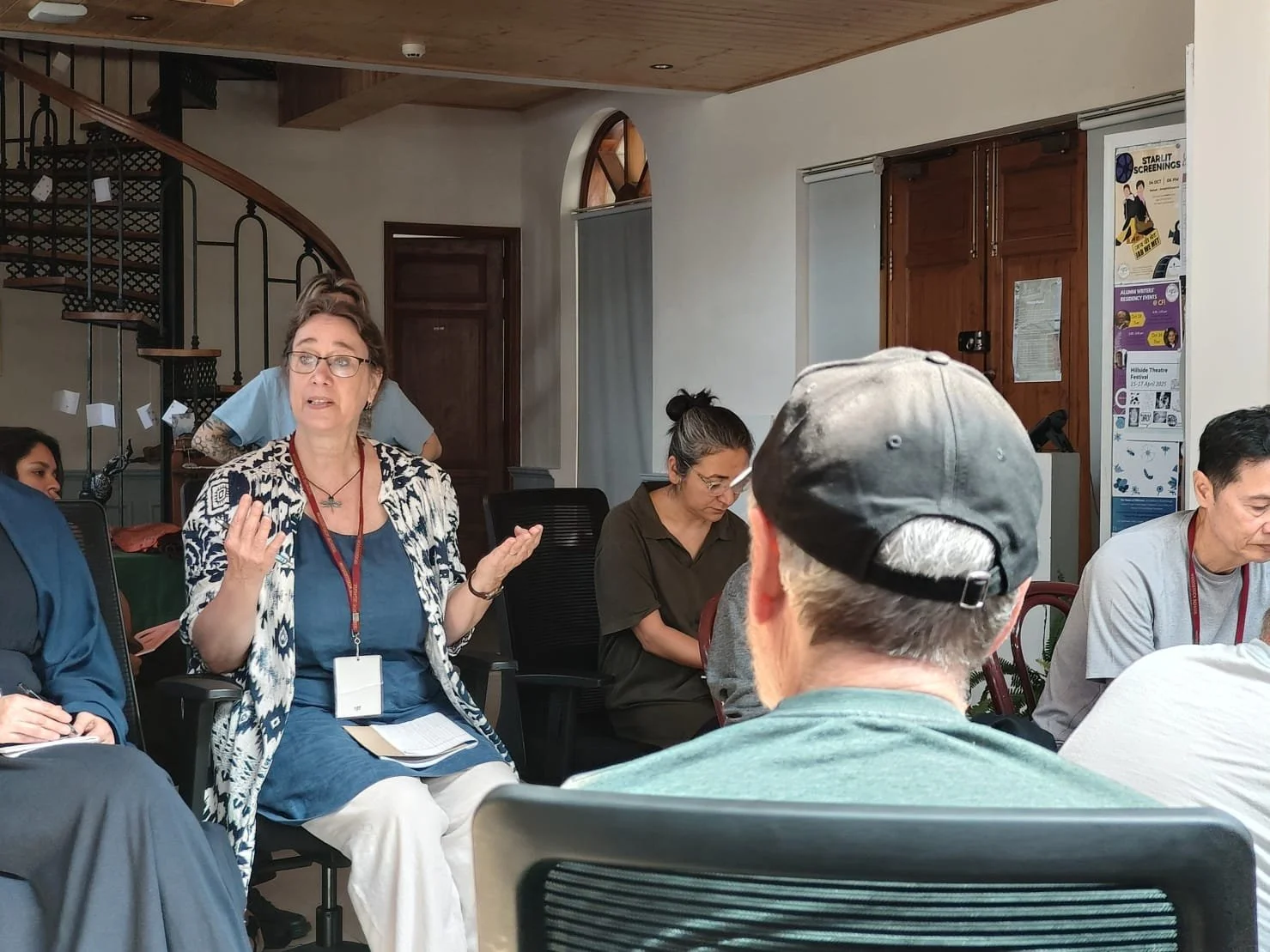
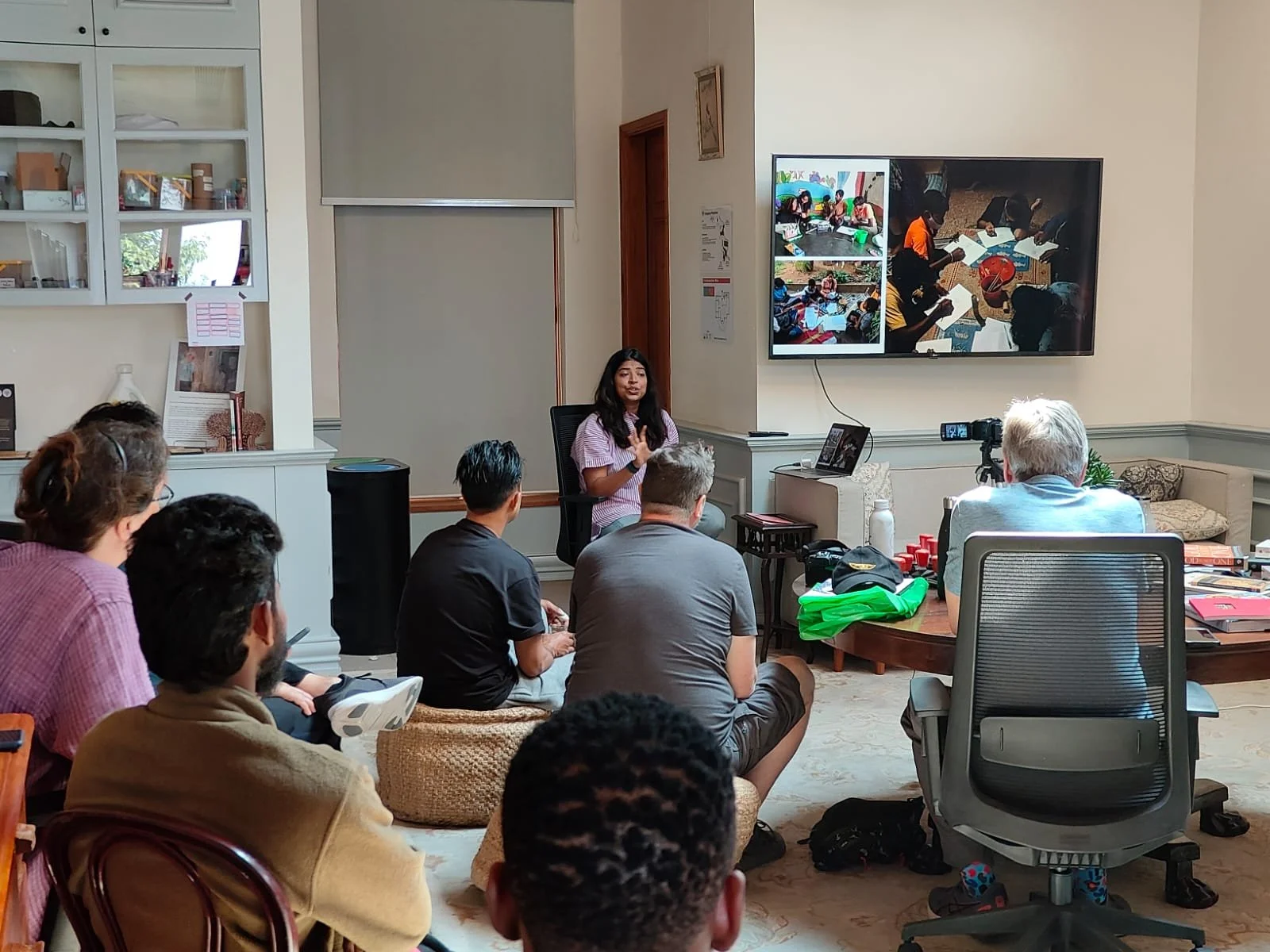
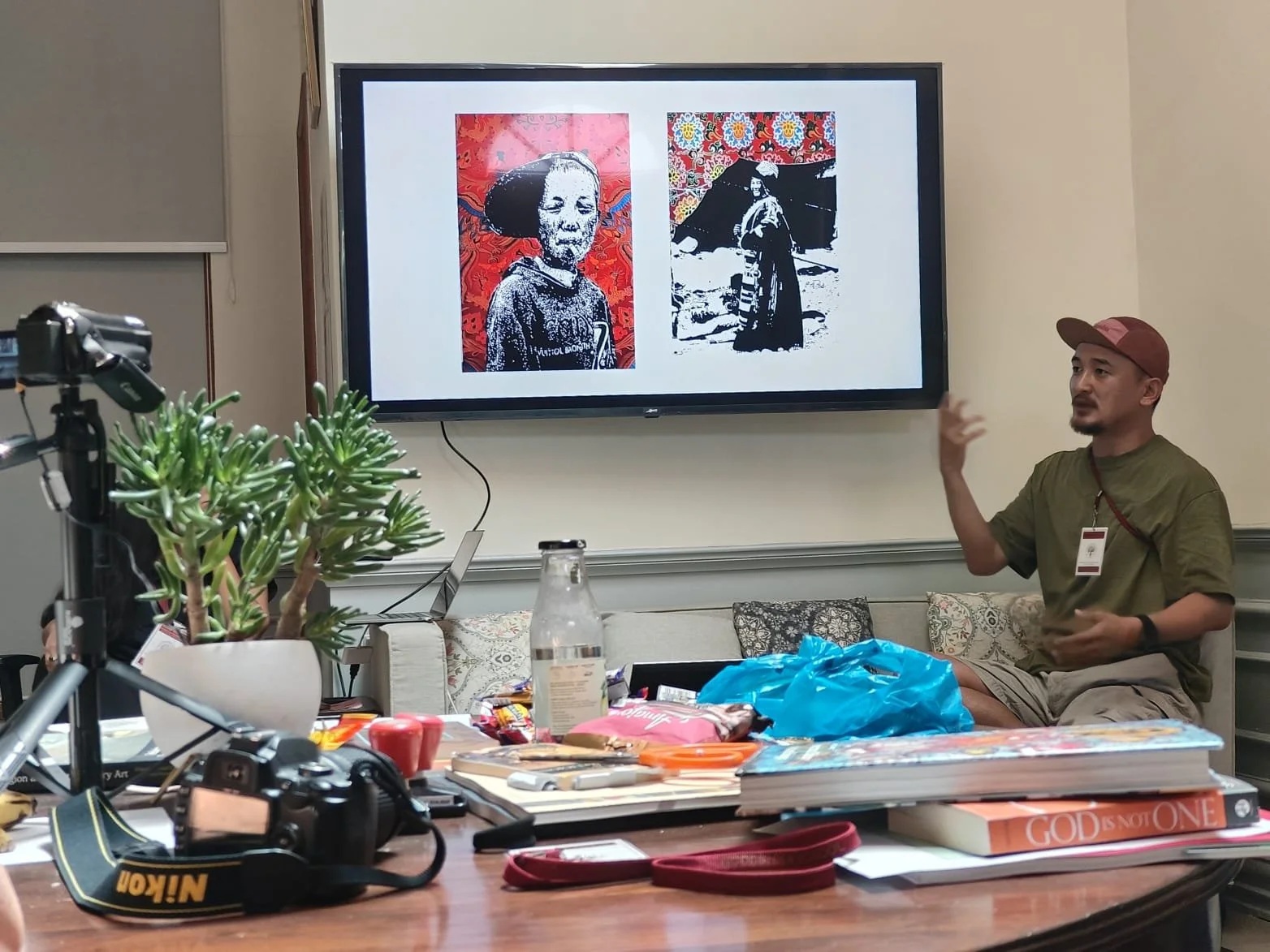


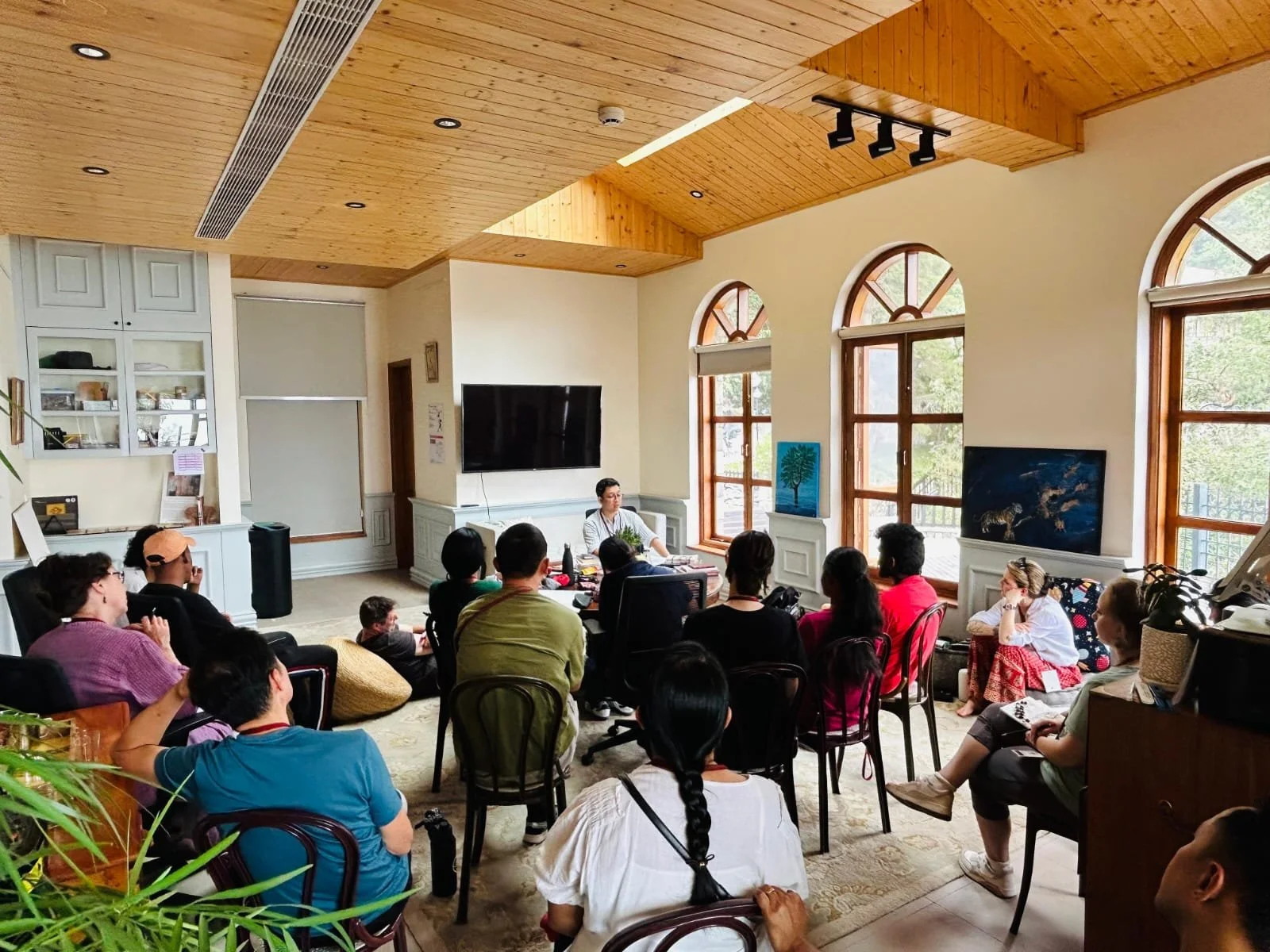
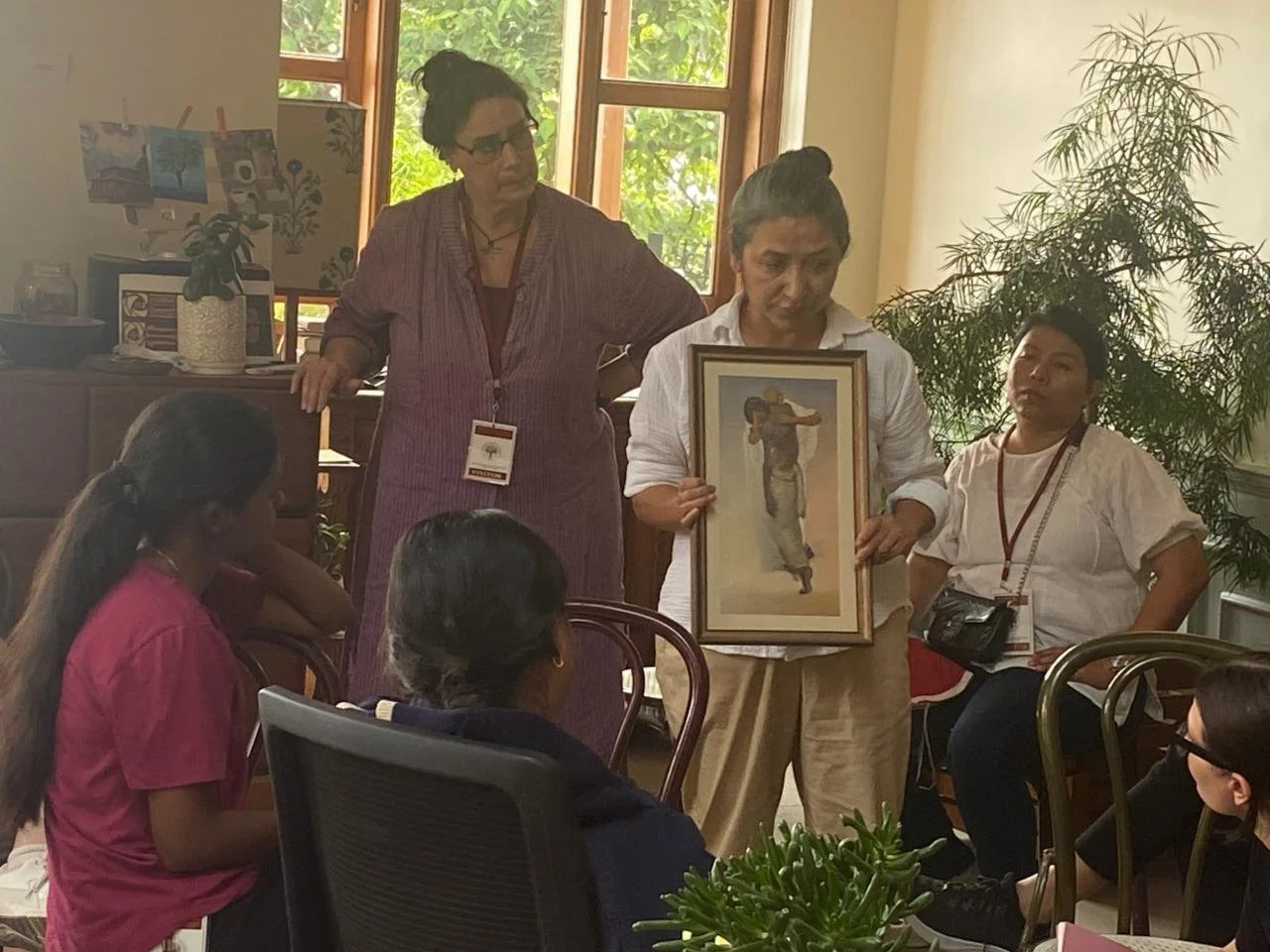
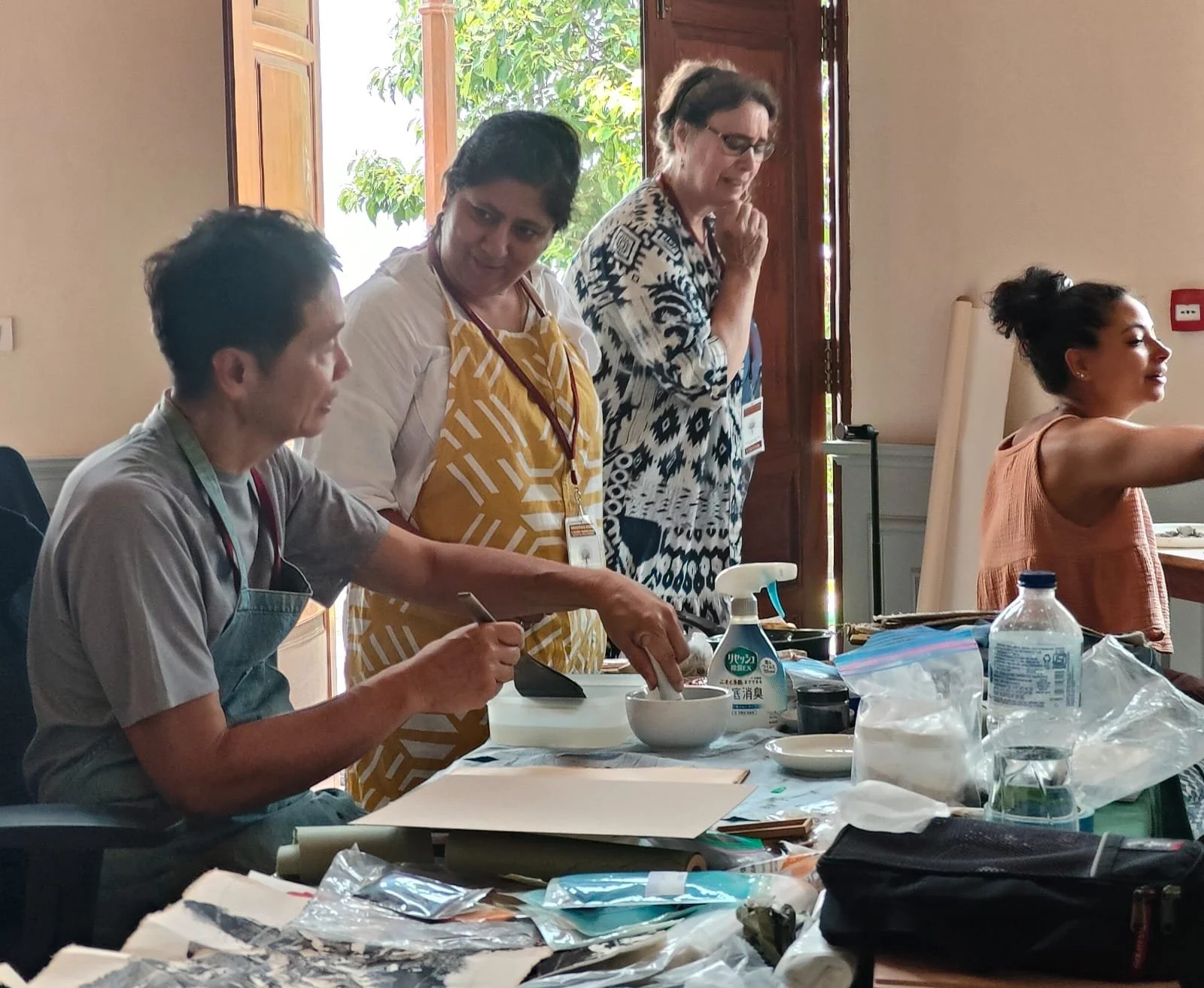
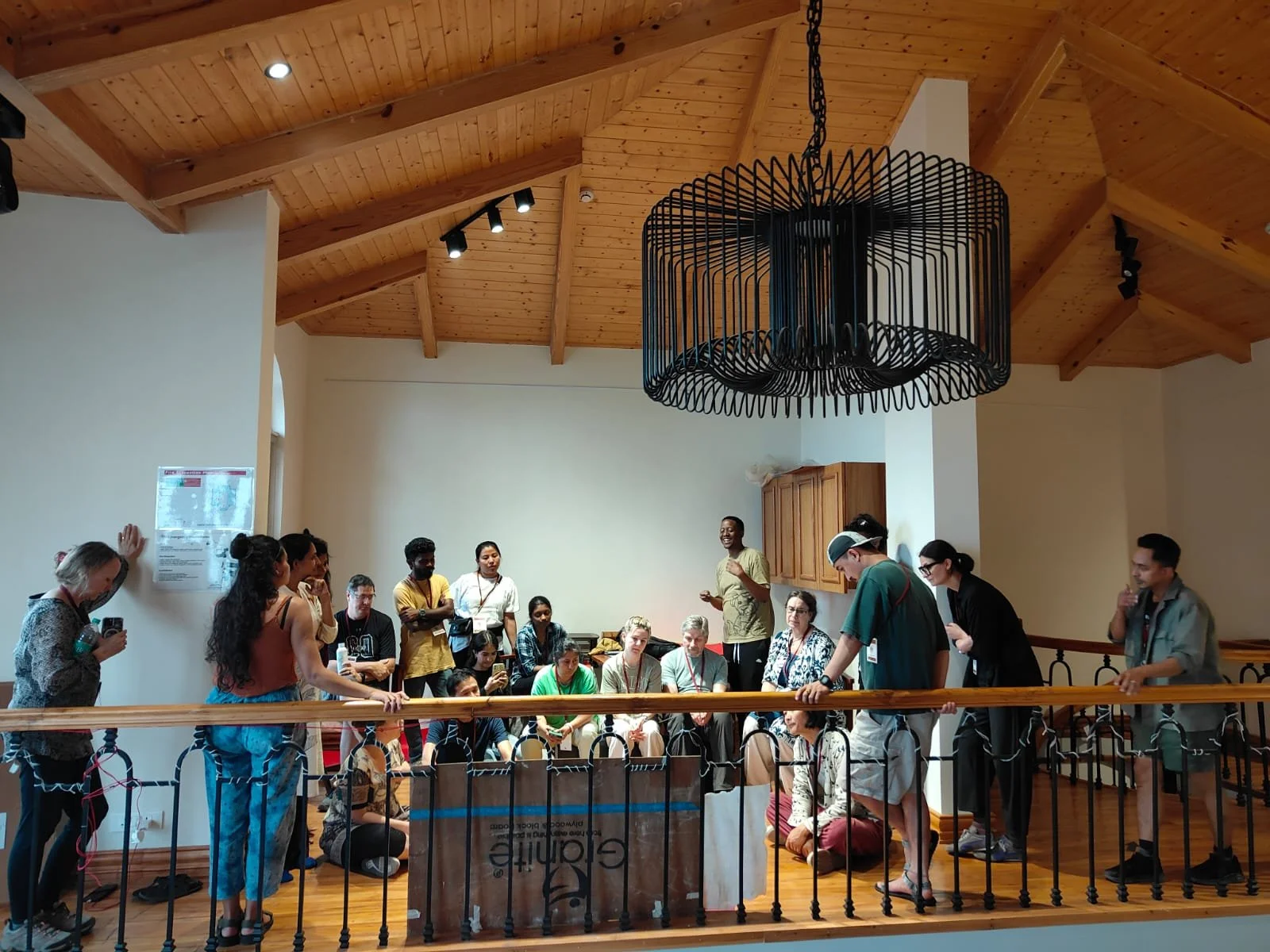
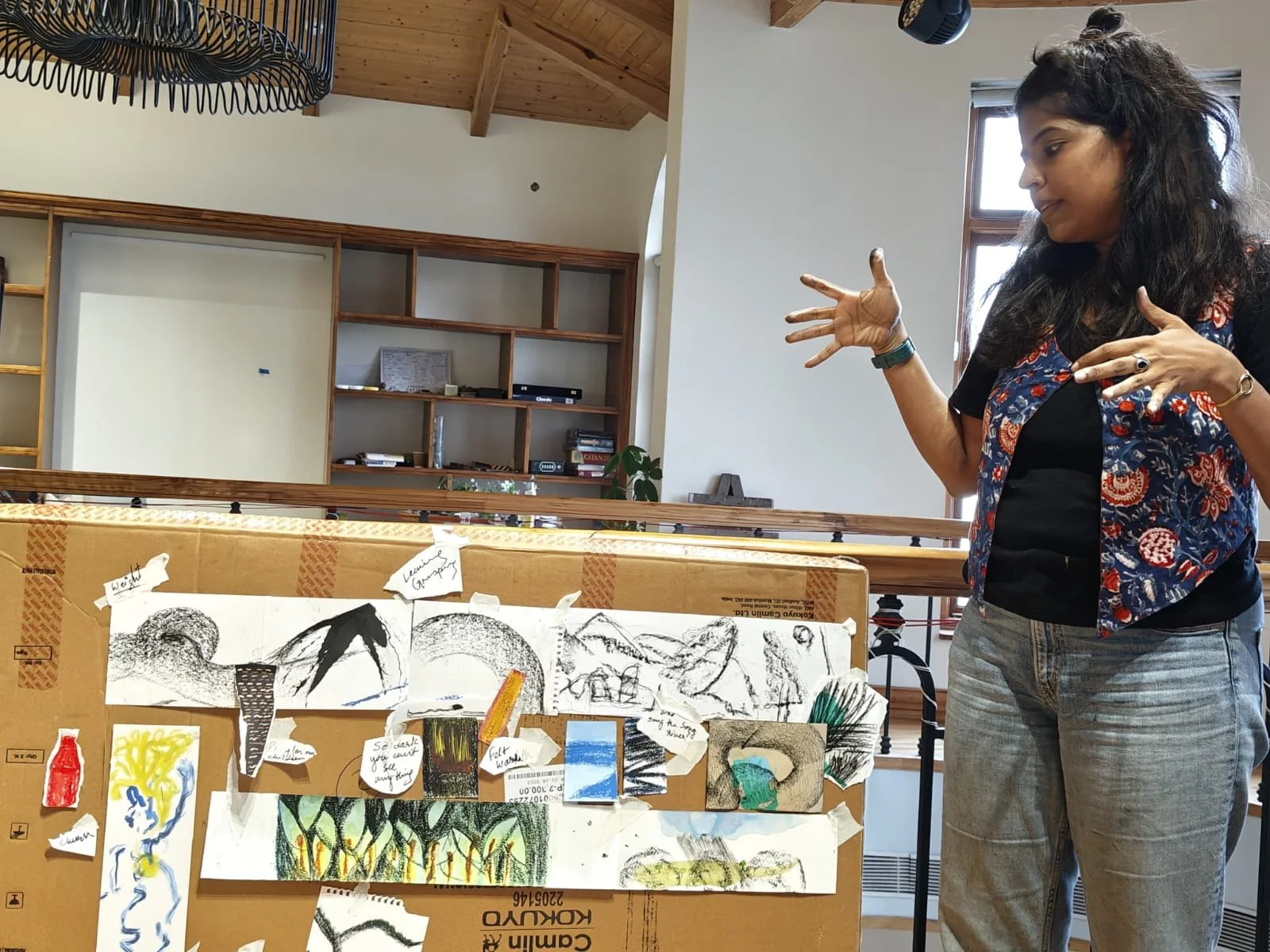

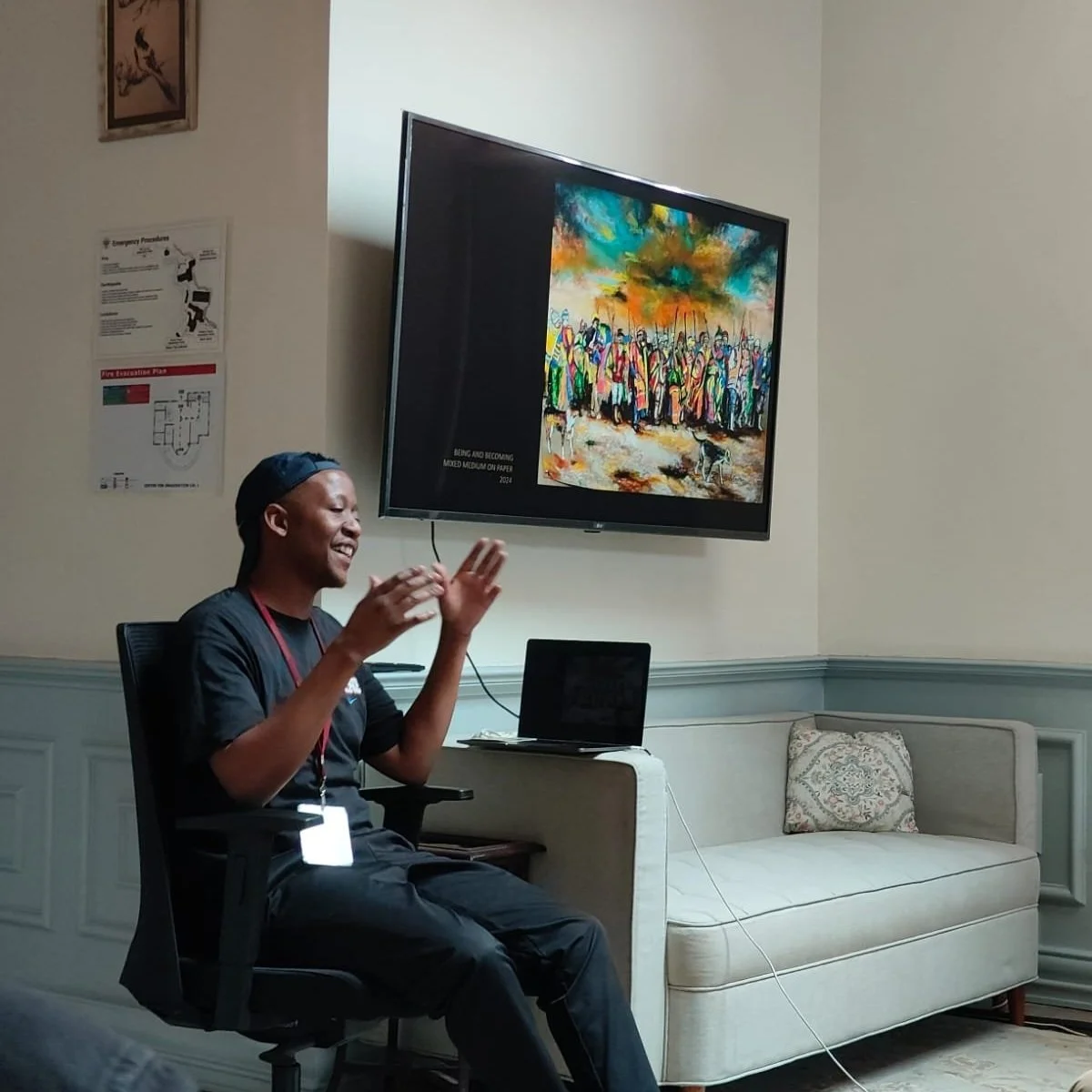
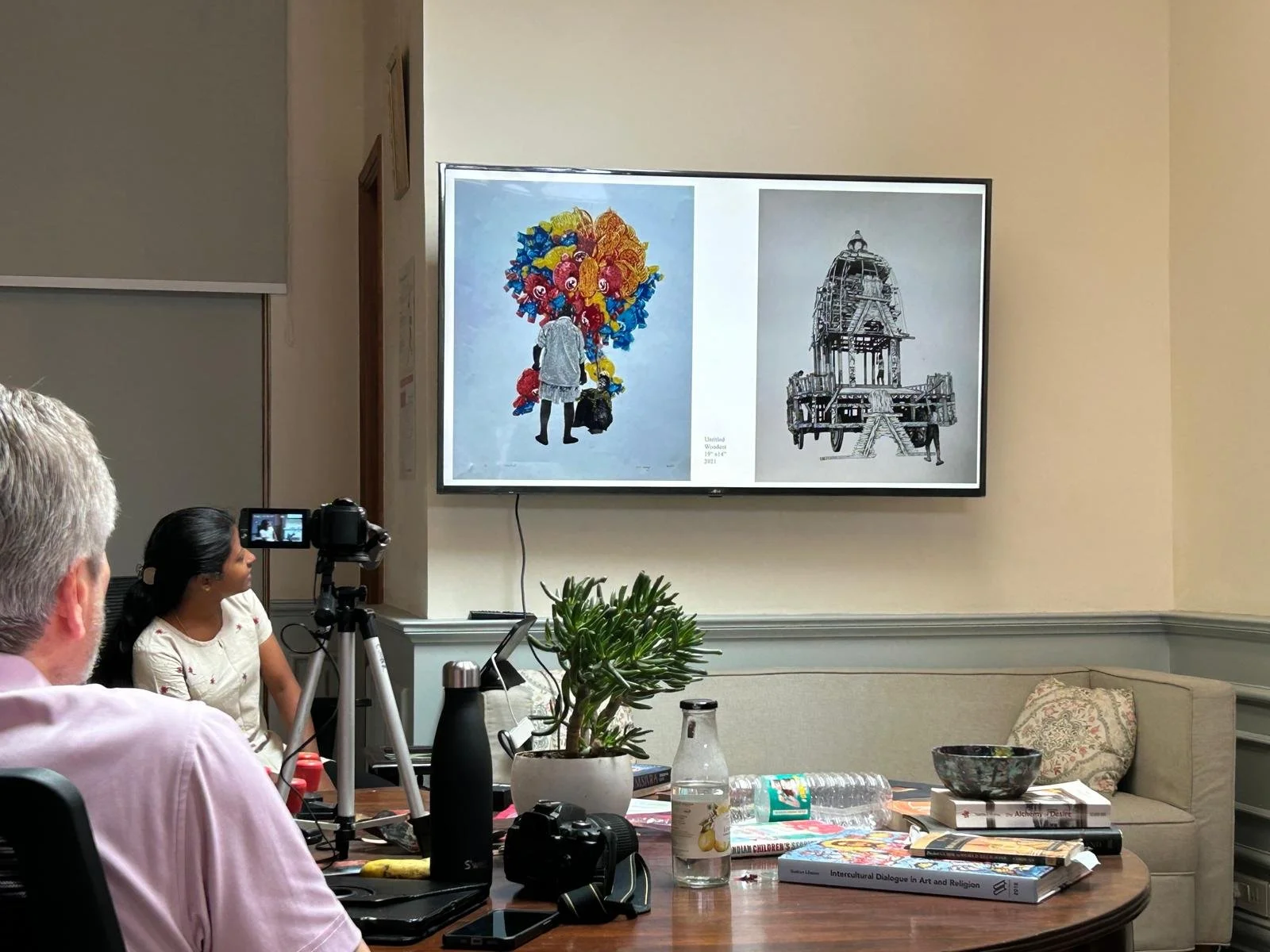

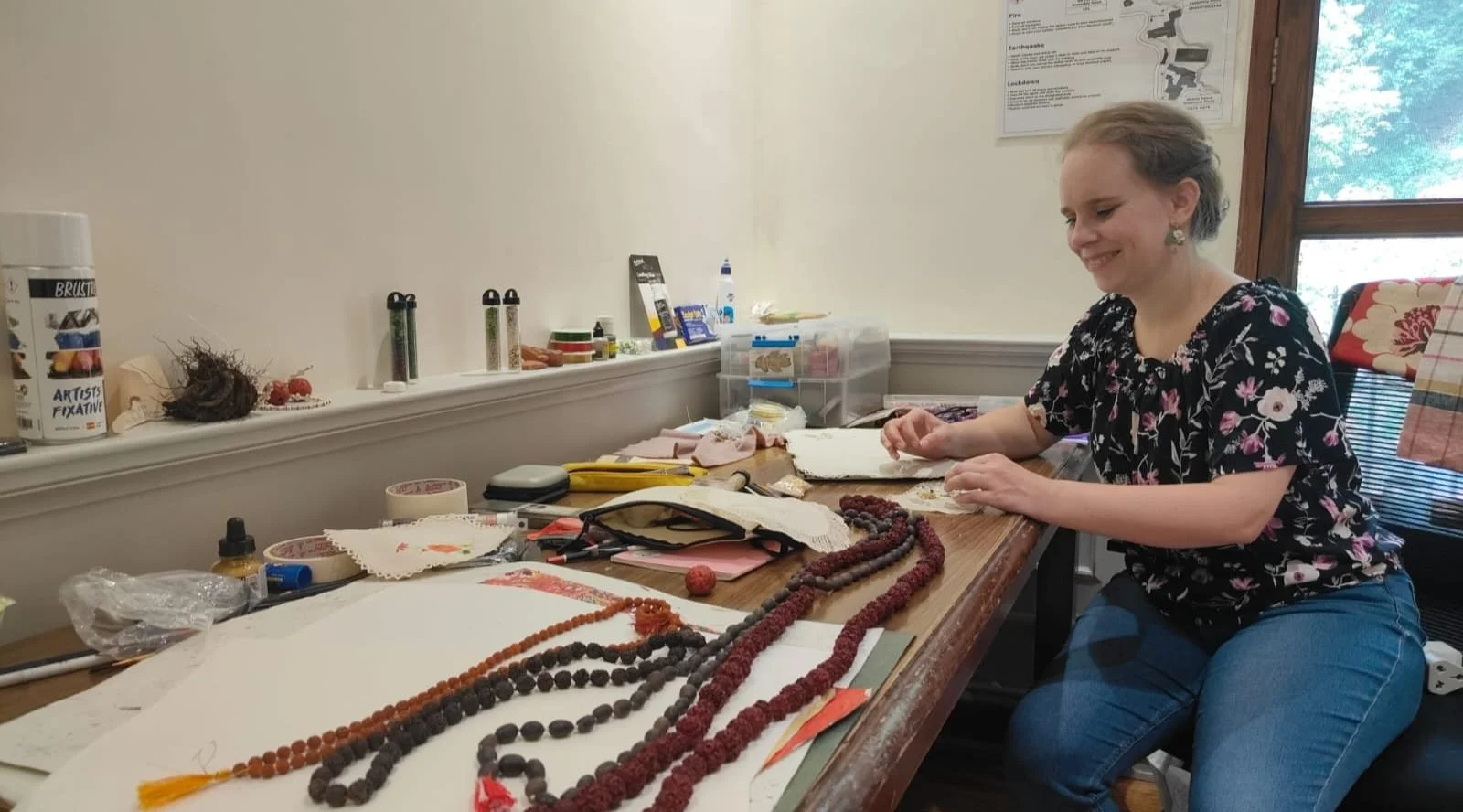
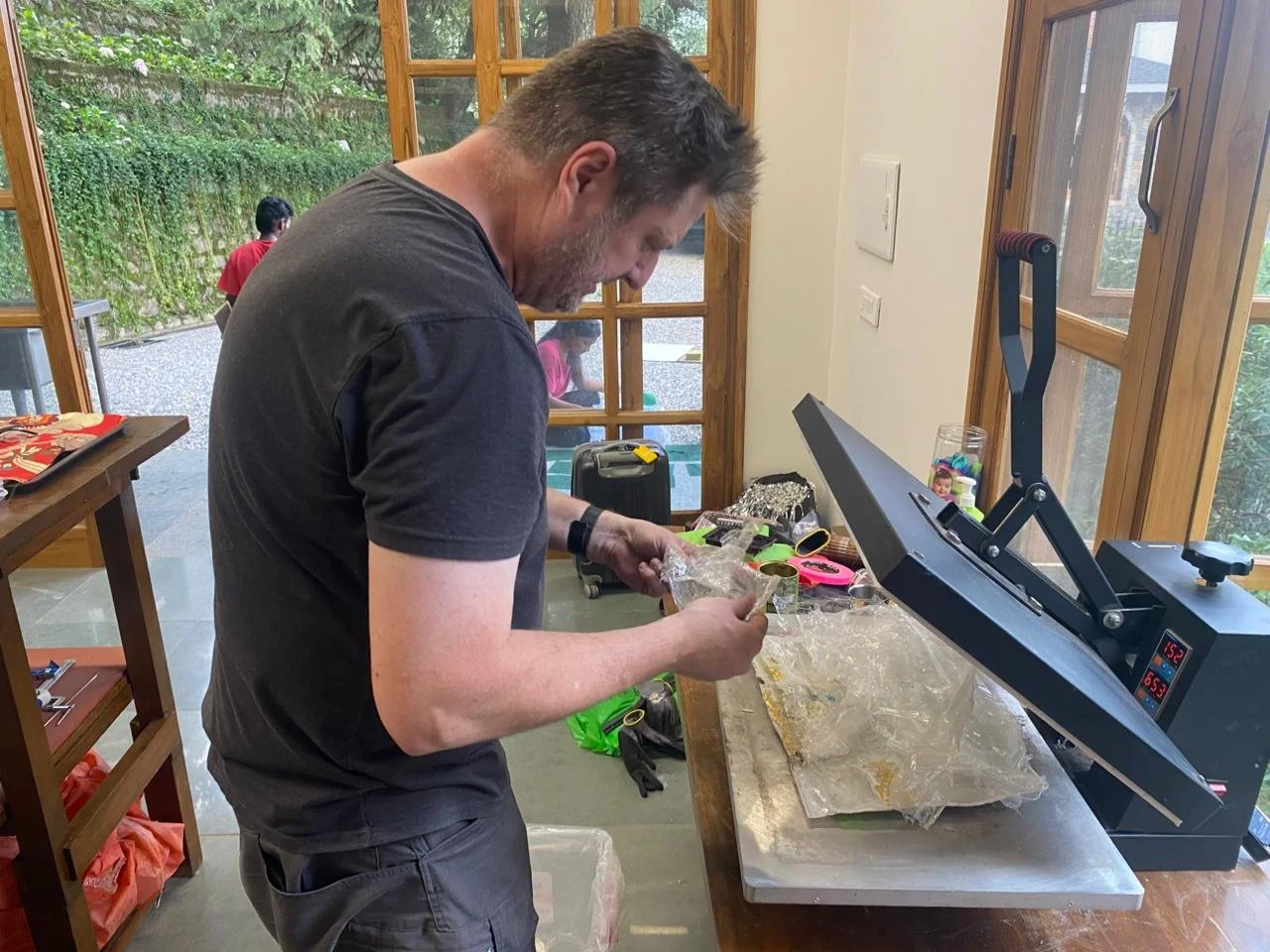
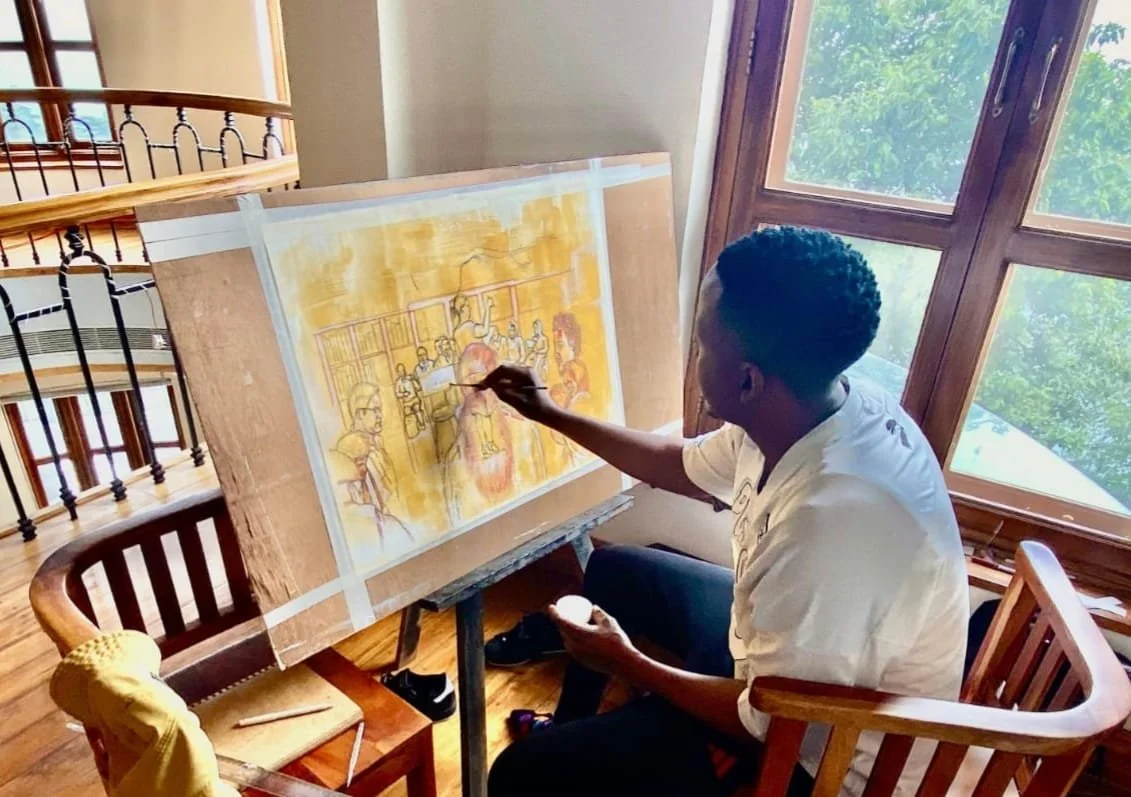
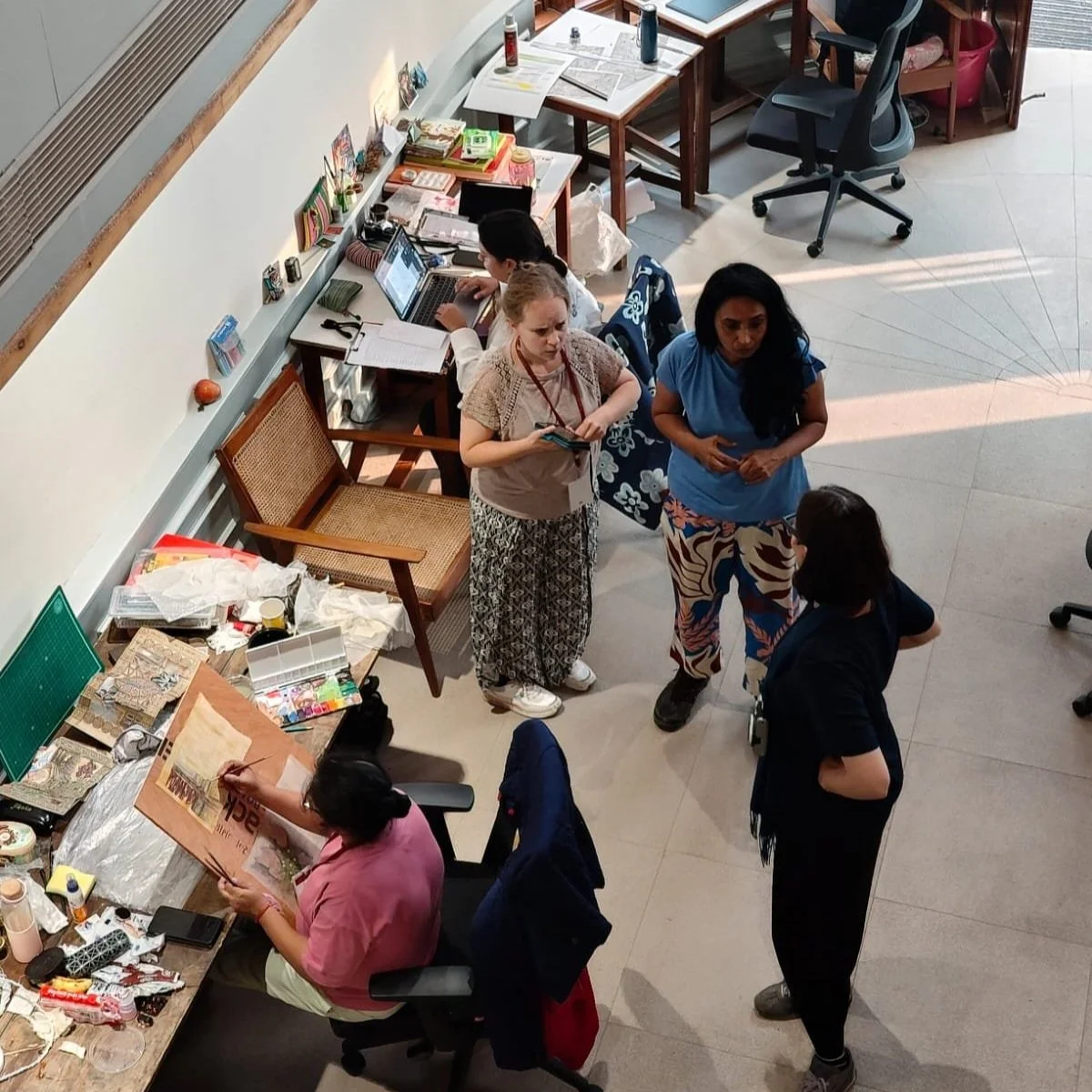
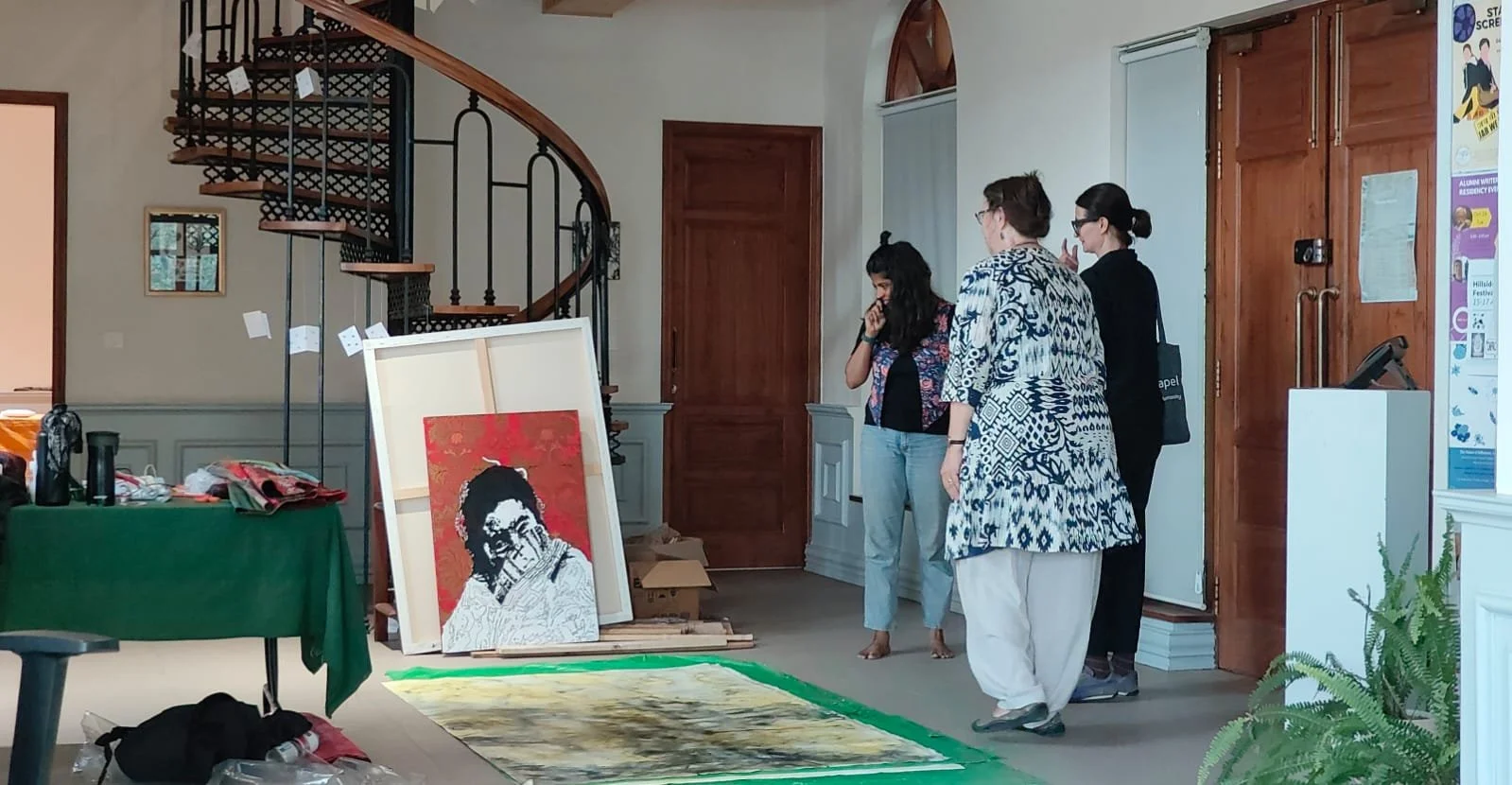

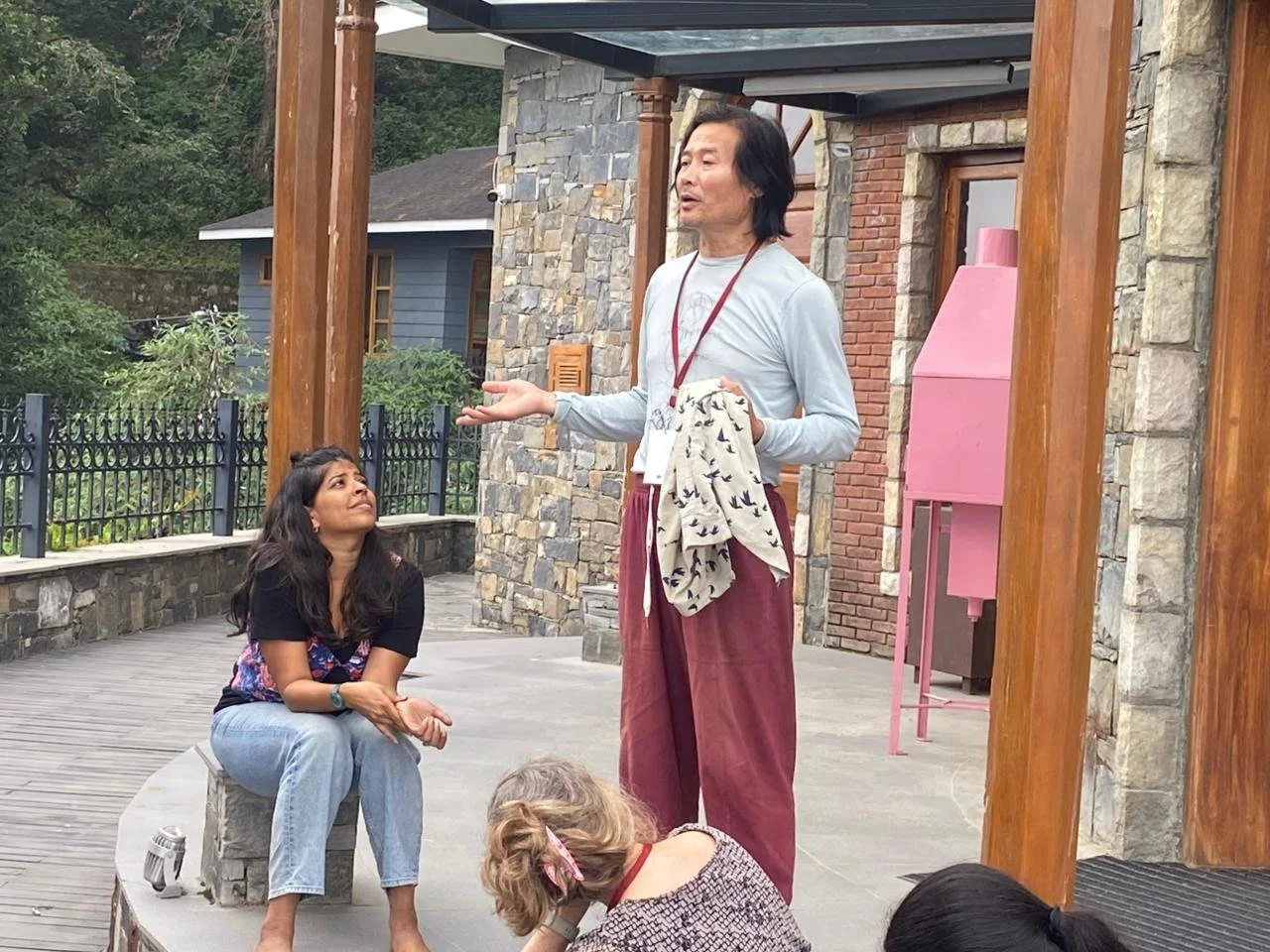









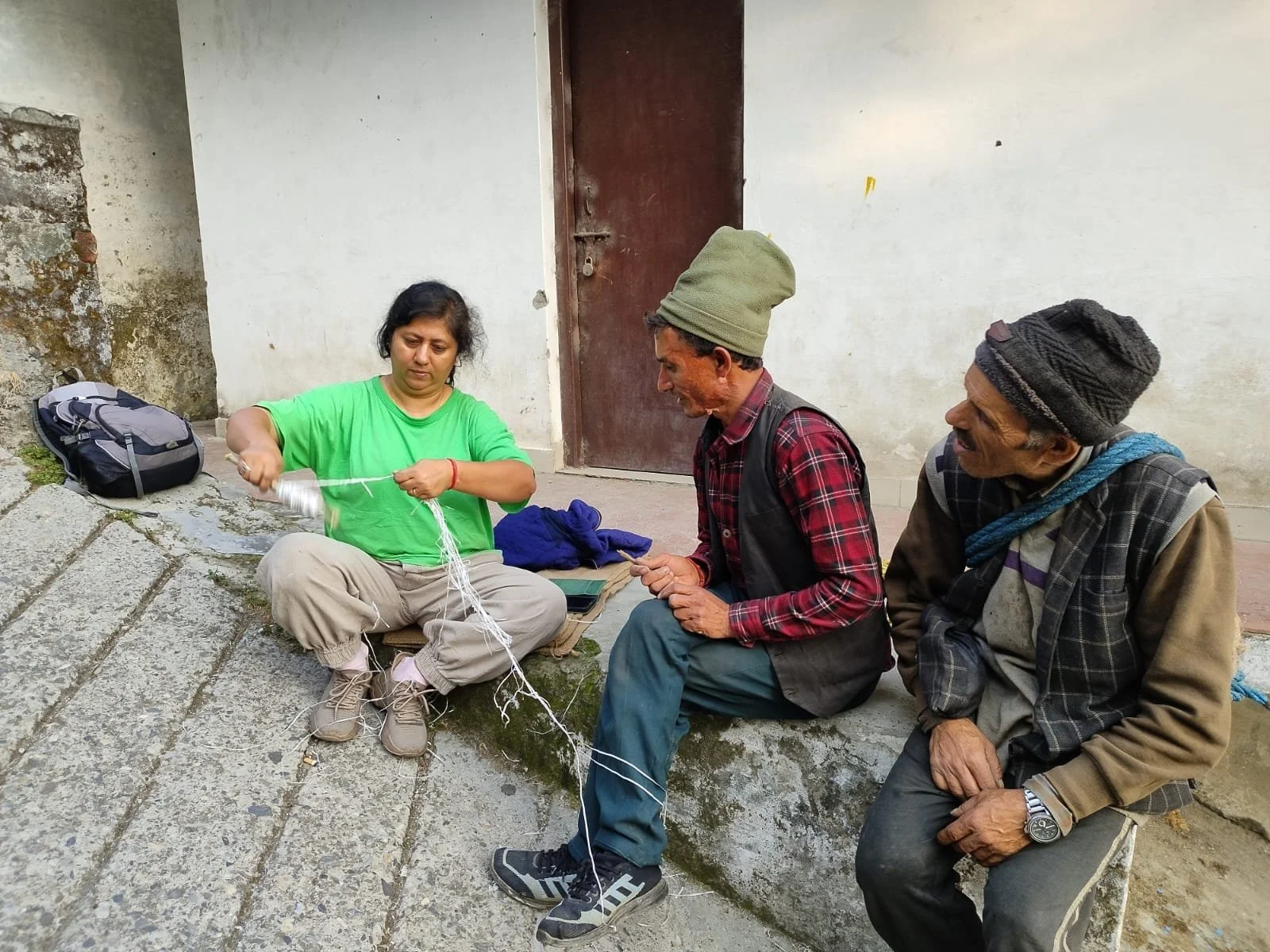


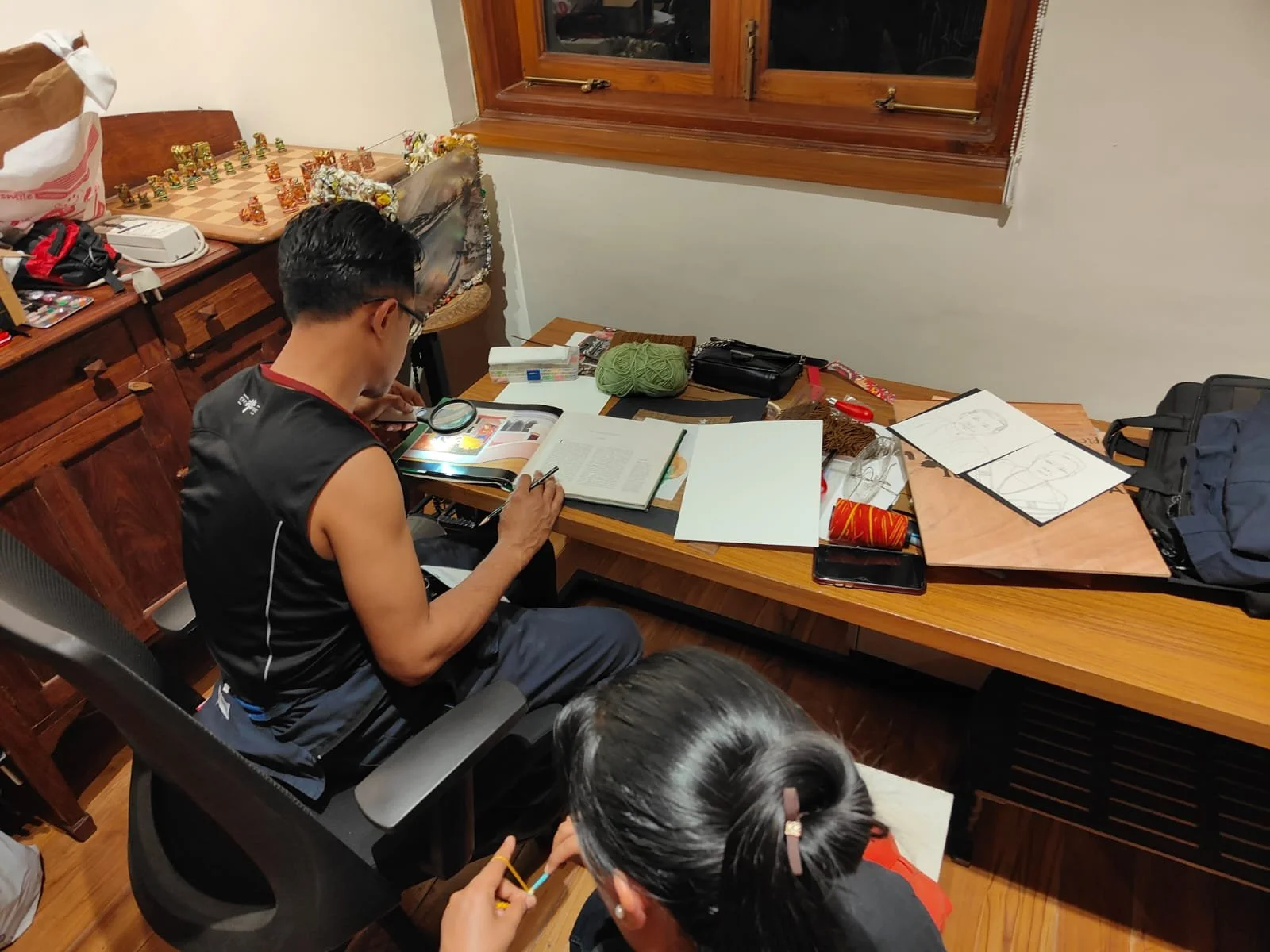



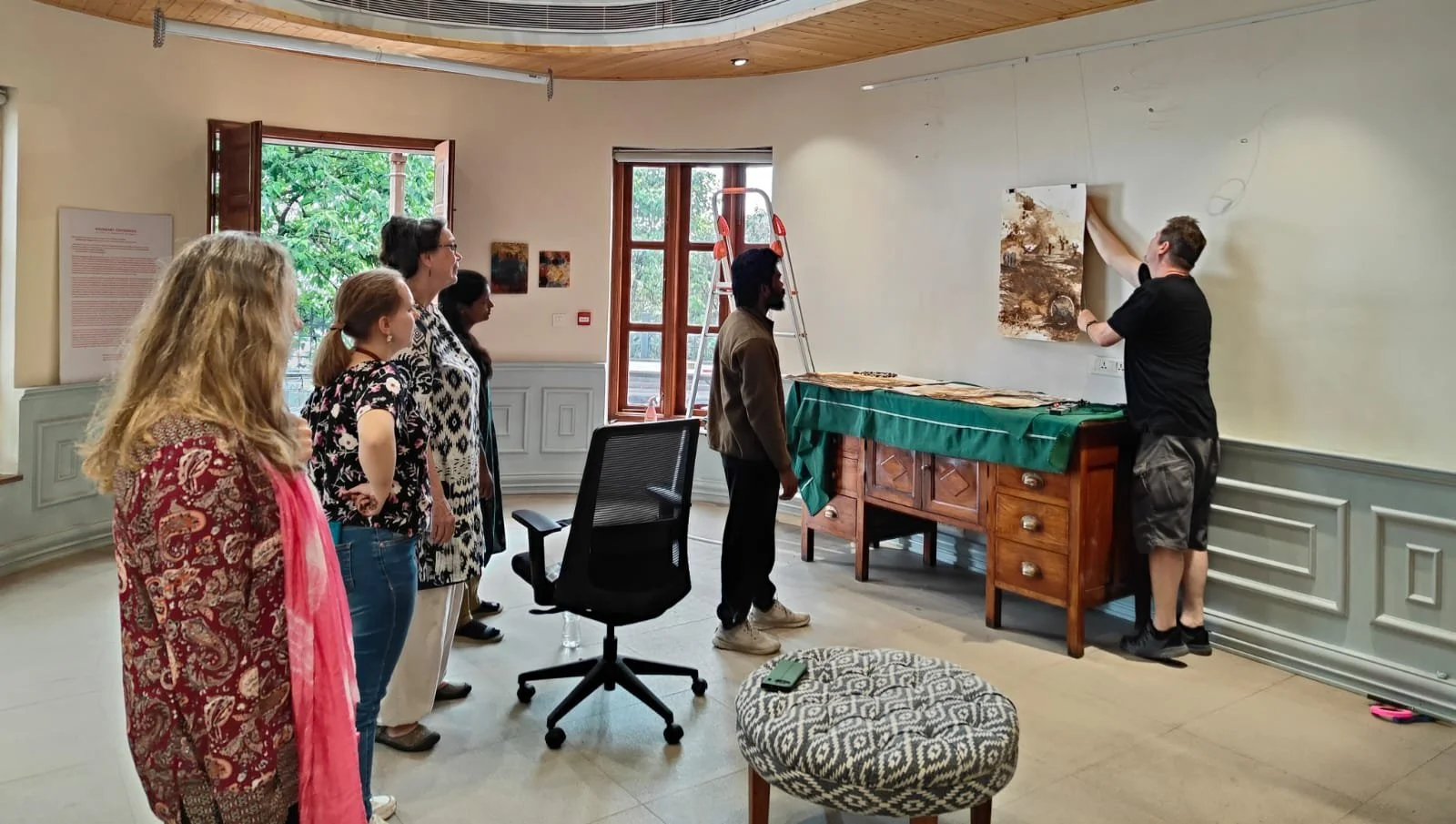
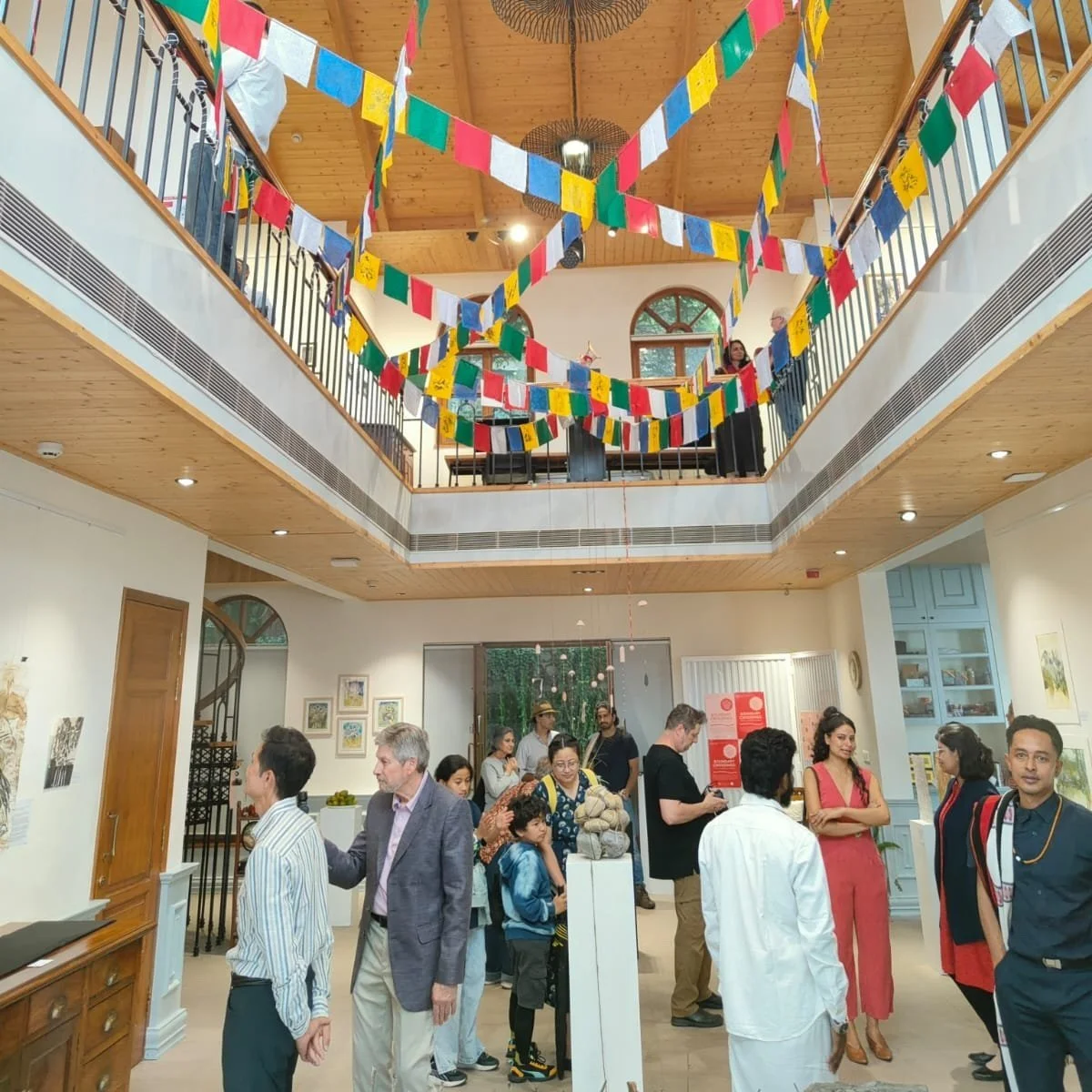
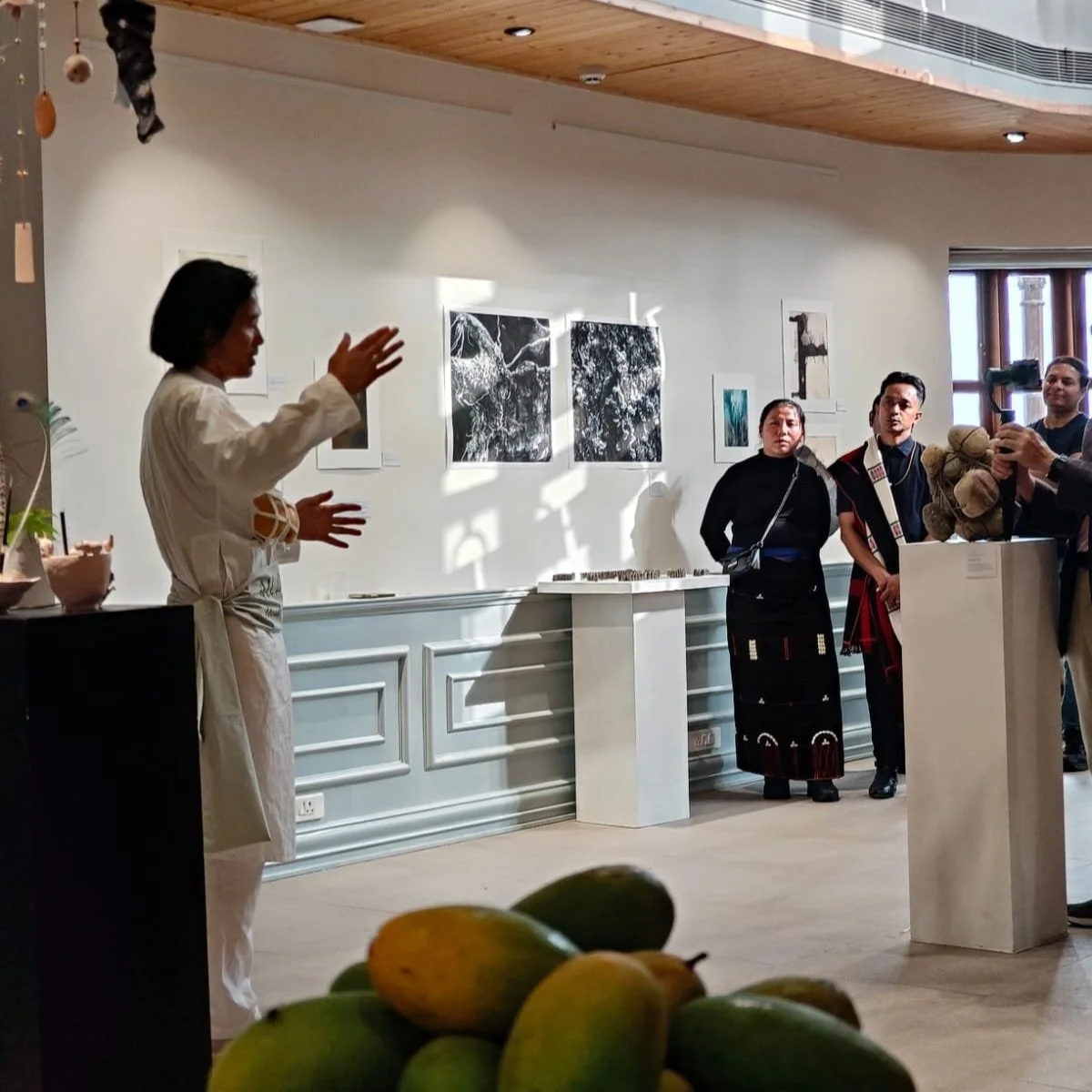
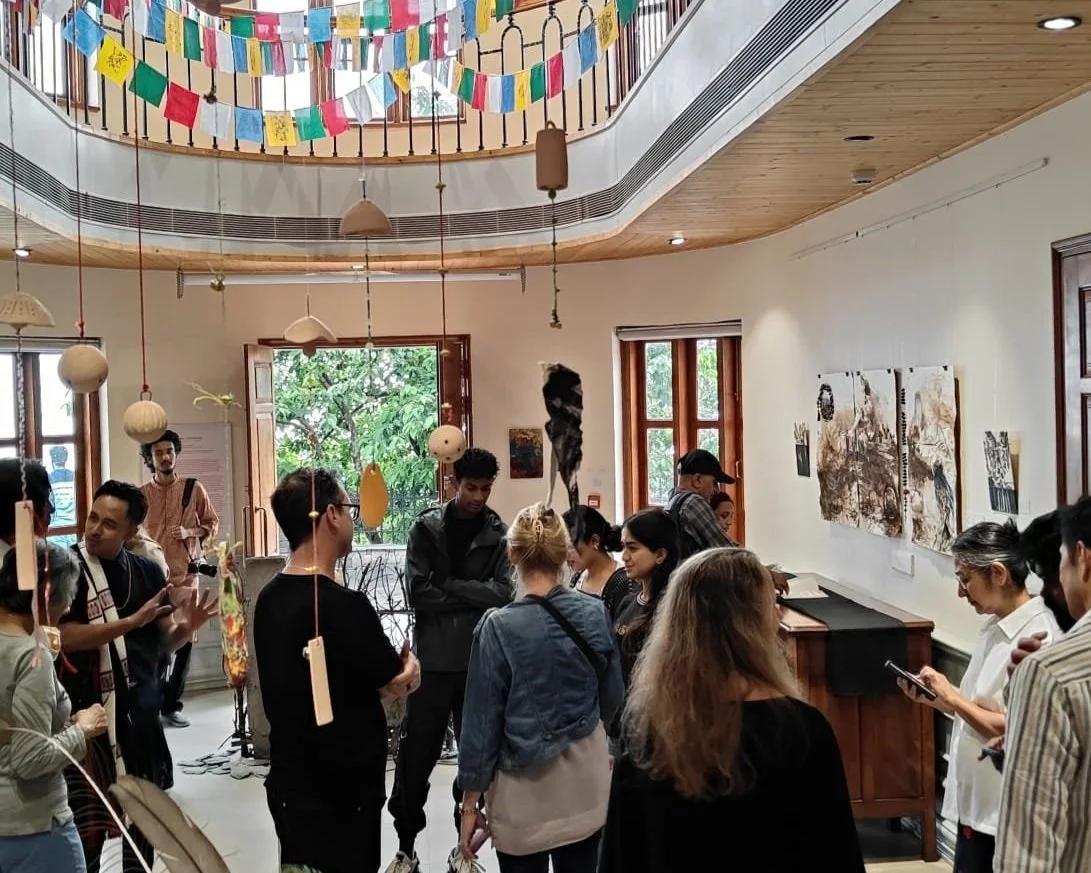

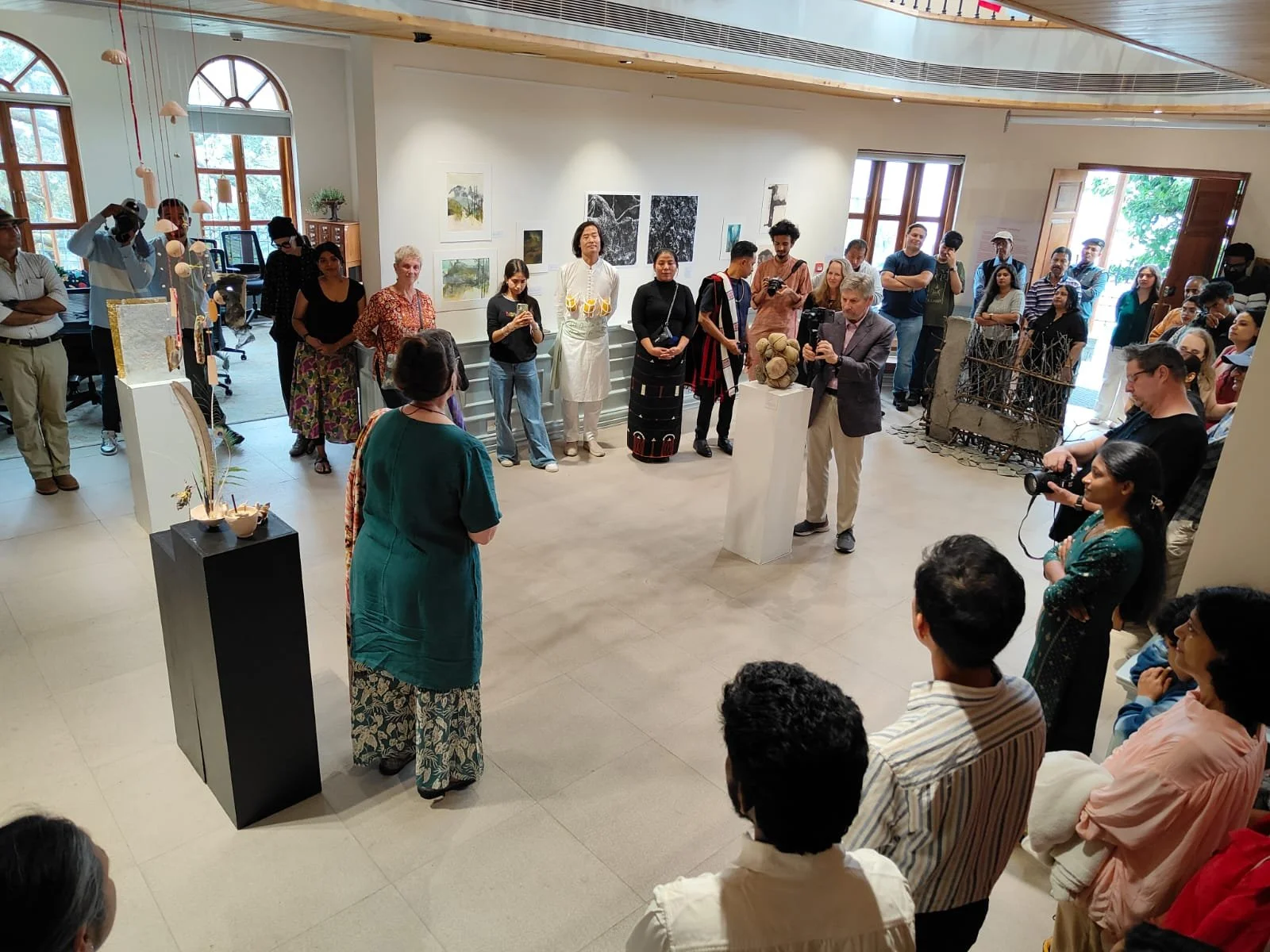


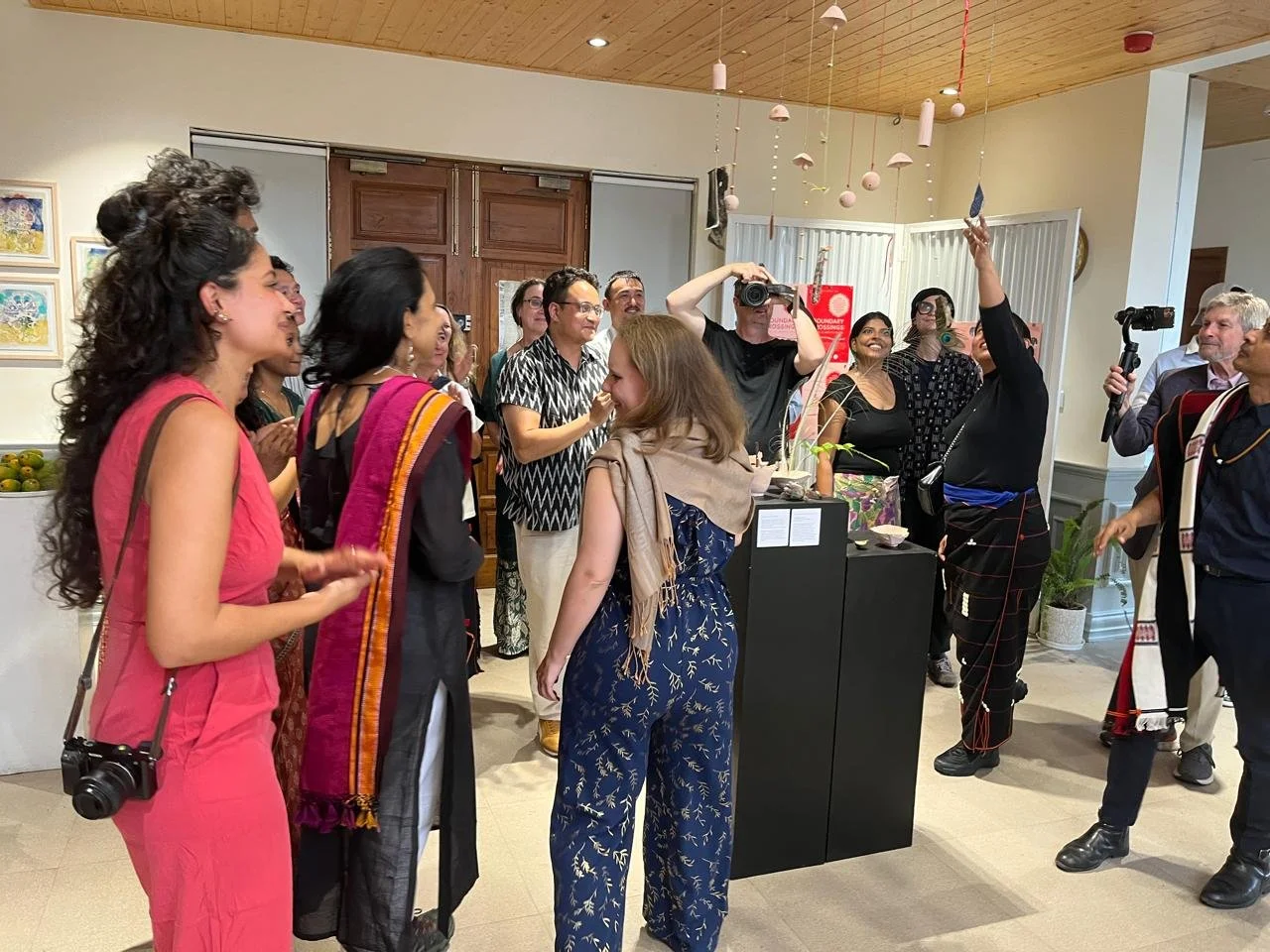
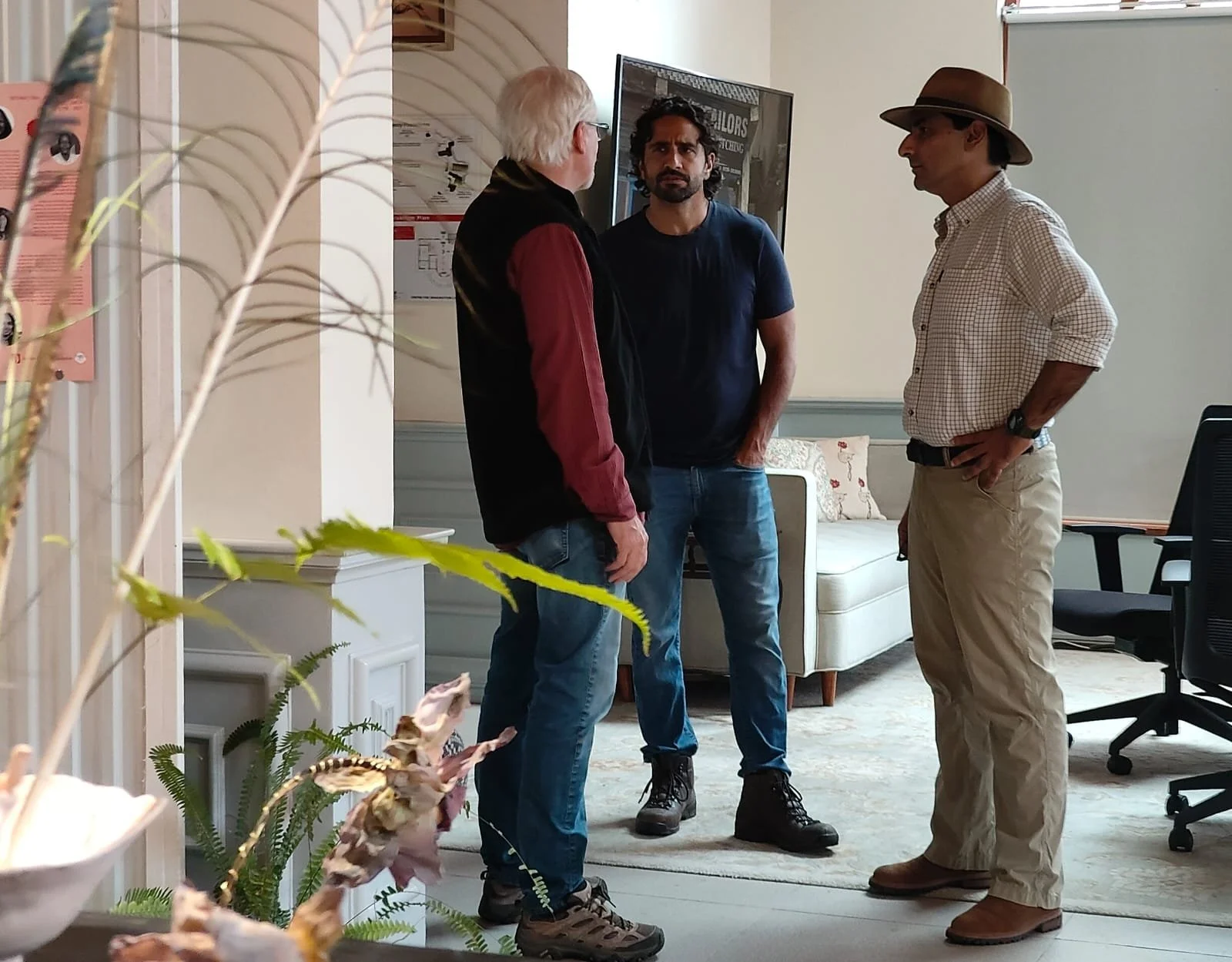

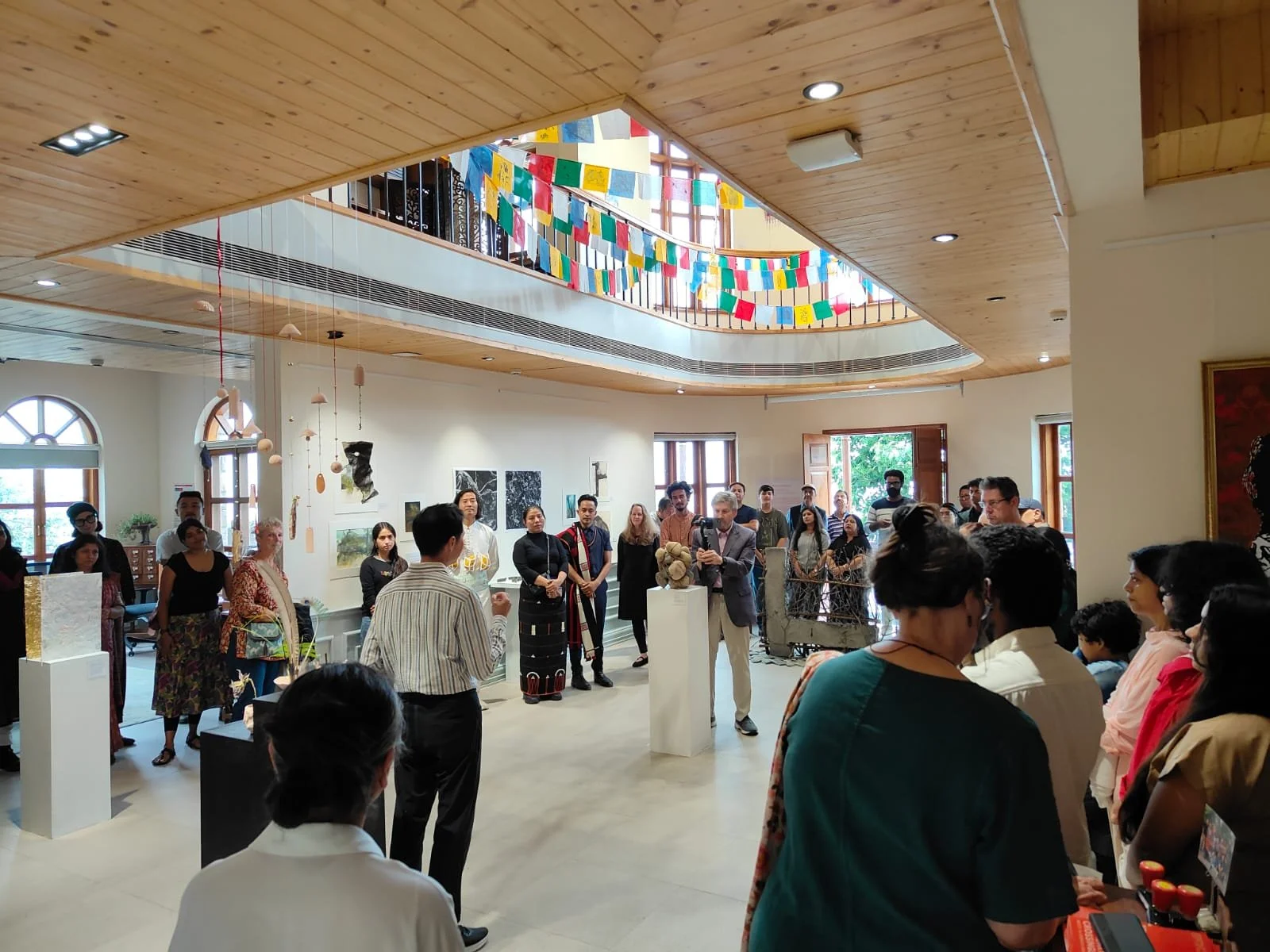
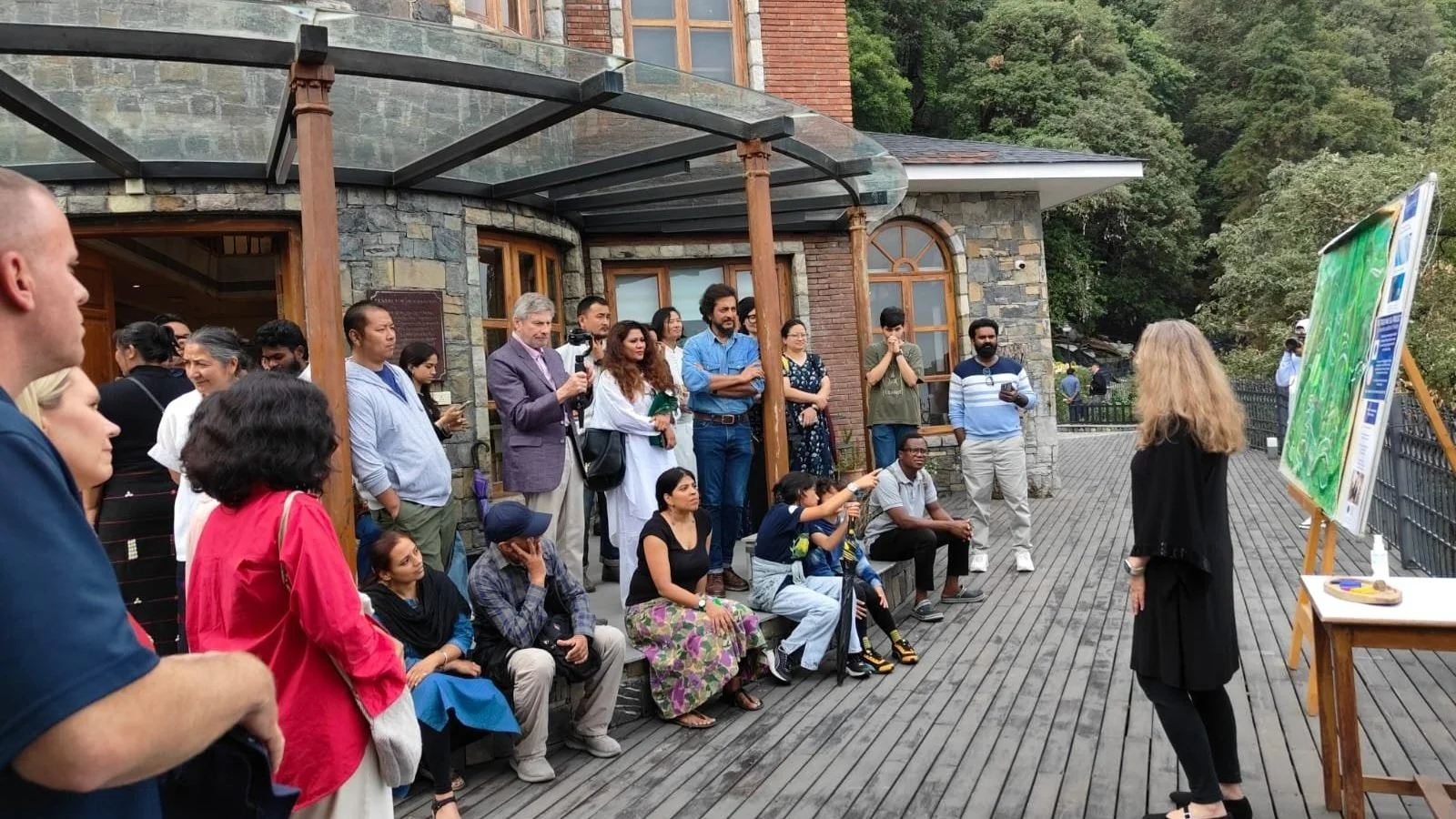
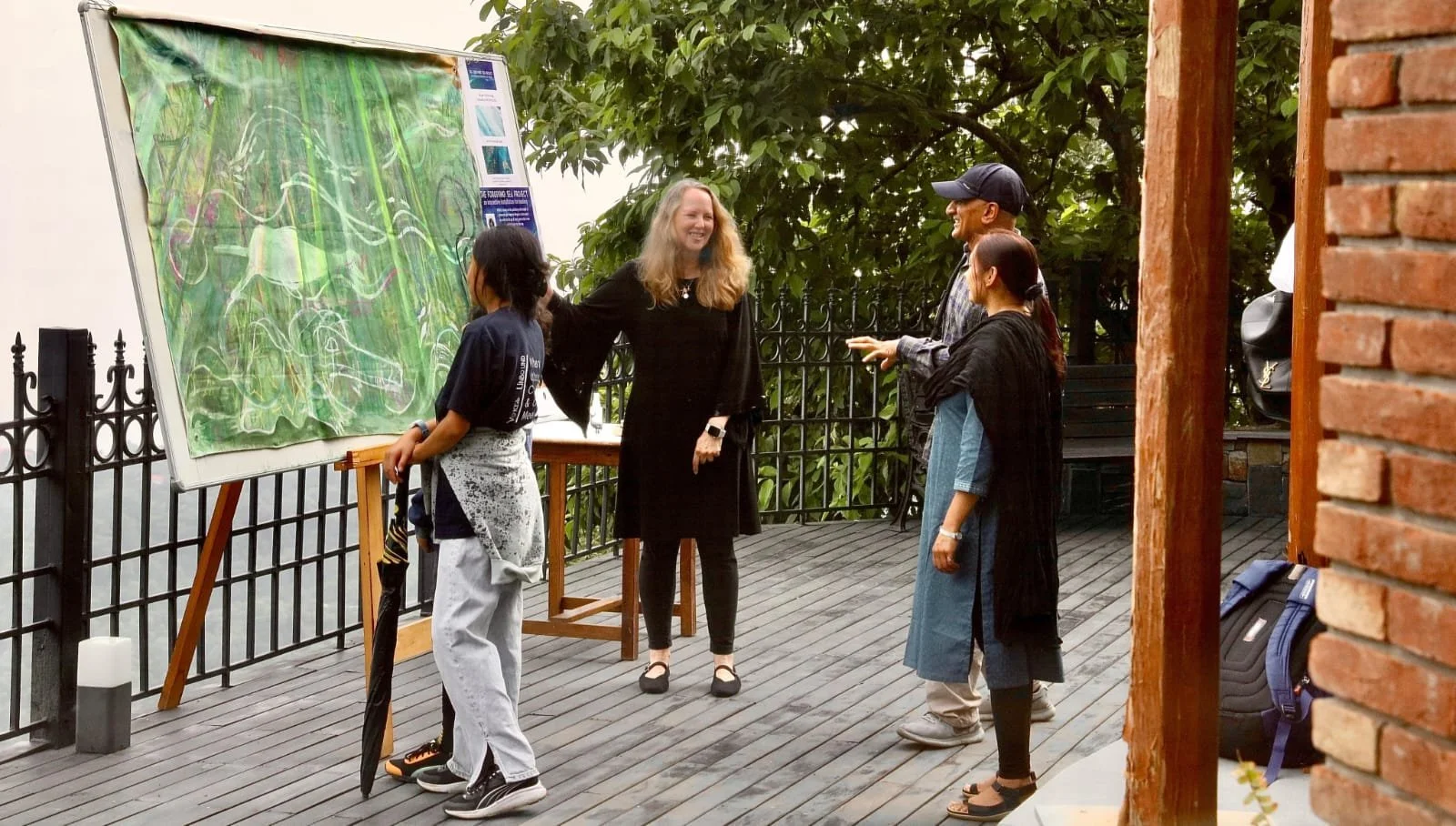
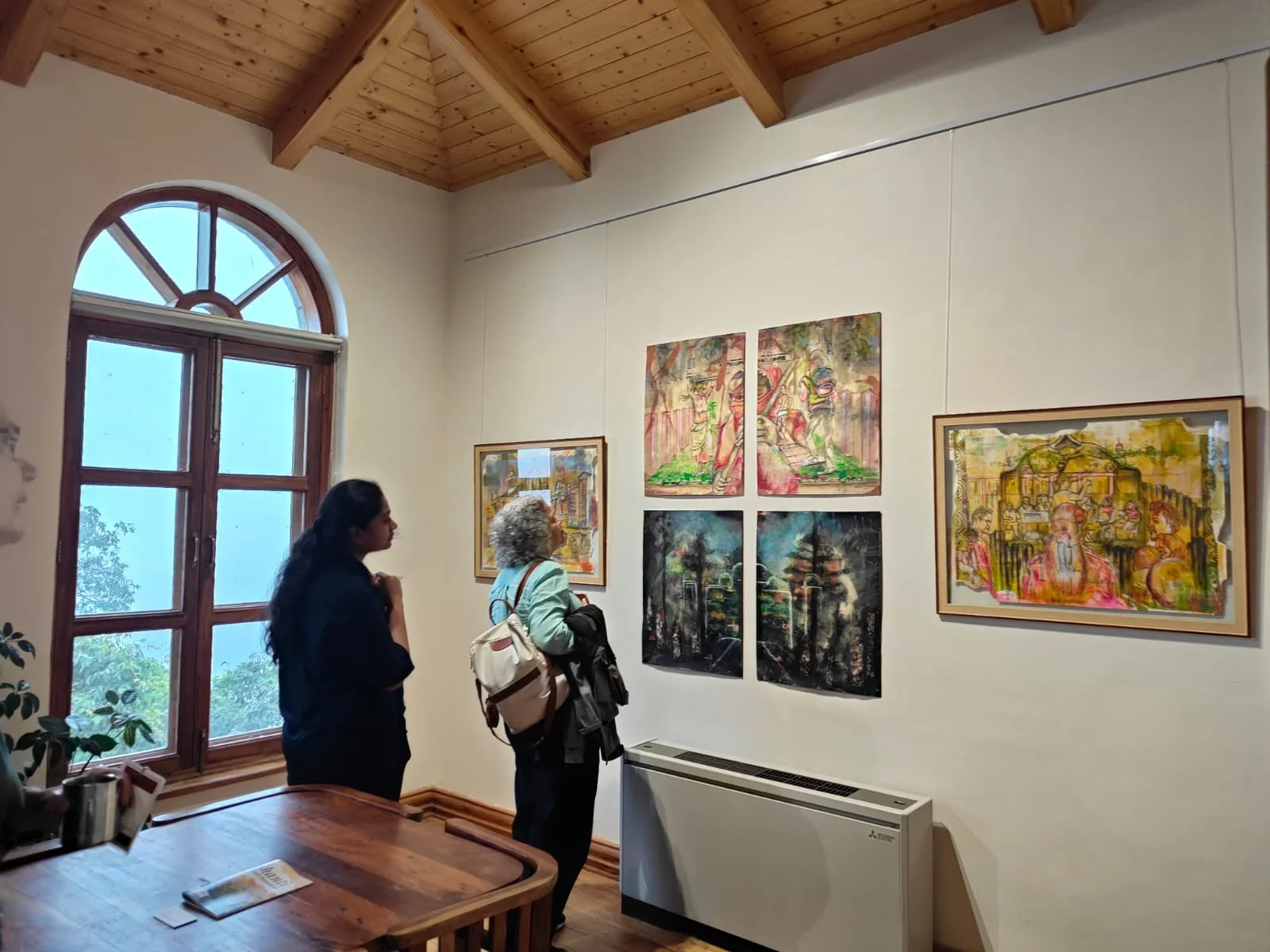

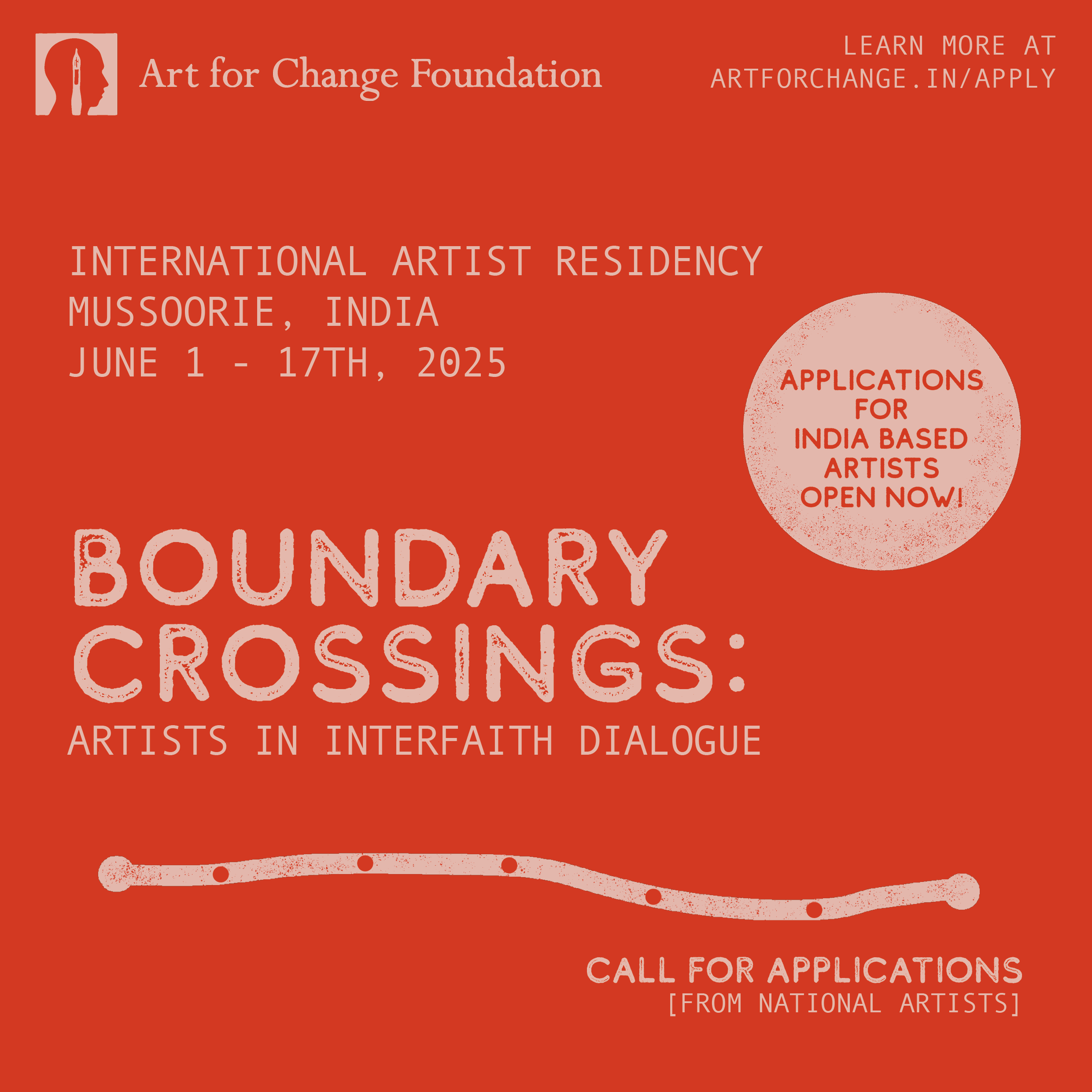
Your Custom Text Here
Curatorial Note by Rachel Hostetter Smith, PhD, Curator and Mentor, 2025 International Artist’s Residency - Art for Change
Faith is the bird that feels the light and sings when the dawn is still dark.—Rabindranath Tagore, Bengali poet, painter, philosopher, and social reformer
…although the religions of the world are apples and oranges and are more different than they are alike, still there is a quality of “fruitfulness” that characterizes them all and out of which a “common ground” for shared conversation can be established.—Dr. Paul Knitter, American theologian
Interfaith dialogue is nothing new to India. In the 16th century, the great Mughal Emperor Akbar (1556-1605) ruled over a realm marked by a diverse population with varied religious beliefs, including Islam, Hinduism, Jainism, Christianity, and Zoroastrianism. Akbar famously initiated discussions among scholars of different religions to foster a culture of intellectual exchange and mutual respect. He established the Sulh-i Kul, literally 'Peace for All,' a policy of universal tolerance, advocating respect and acceptance of all religions. Not surprisingly, maintaining a balance among diverse and sometimes conflicting religious groups was a constant challenge. Nevertheless, the Sulh-i Kul was visionary, representing an early attempt at the peaceful coexistence among diverse religious communities based on mutual respect and the pursuit of harmony.
And so, in June 2025, eighteen artists from across Indian and several other countries including South Africa, China, and the United States gathered on the campus of Woodstock International School for a residency organized by Art for Change to take up this pursuit—to explore the topic of spirituality and to engage in interfaith and intercultural dialogue while living, learning , and making art together. This exhibition is the culmination of that collective enterprise. The hill station of Mussoorie proved to be a site ideally suited to engage this theme with its rich diversity of historic and contemporary religious sites and communities, from ancient sacred forests and nearby pilgrimage sites to contemporary Hindu, Jain, and Muslim temples and shrines, from historic Christian churches built by the British to contemporary Indian Christian communities, and a contemporary Tibetan Buddhist community that was established by the Dalai Lama when he first left Tibet before establishing his base in India at Dharamsala.
As a collaboration with Woodstock’s Centre for Imagination, under the vital and welcoming direction of Mrs. Renu Oberei and the Summer School, we took full advantage of the many experts on aspects of religion and the region living and working here. We met with Mr. Akshay Shah of the Hanifl Centre for an introduction to the ancient sacred groves in the Himalaya and participated in online discussions with Mr. Alex Cleberg and Mr. Kline Verhill on approaches to effective intercultural and interfaith dialogue. We were led on an extended walk through the heart of Mussoorie under the expert guidance of Mr. Yusuf Ansari to see first-hand the diversity of religious sites and current practice represented here. We met with Mr. Matthias Gergan of Dehradun for a discussion of Christianity and its complex history in India and notable Mussoorie author and naturalist Stephen Alter to further our investigations of this complex and multifaceted topic within the natural and cultural ecosystems of the Himalaya and India more widely. Additional excursions included a visit to the pilgrimage site of Rishikesh in order to dip in that holiest of Indian rivers, the Ganga and Sunday worship with local Christian congregants.
The rigors of ‘doing life’ and making art together daily forged bonds of friendship and care founded on good-will, trust, and common purpose. Most importantly, we desired authenticity and genuine interaction as we pondered together critical aspects of the spiritual in a material world, the nature and experience of ‘faith,’ the sacred, and religious practice, and perhaps most fundamentally, what gives life—and the work of an artist, more specifically—meaning. As Rabindranath Tagore wrote, “The one who plants trees, knowing that he will never sit in their shade, has at least started to understand the meaning of life.” It entails faith, hope, and love. This gathering and the varied and multivalent artworks that resulted from this time together are just such trees, saplings planted in the hope that we might live together well in a world of difference without disharmony or discord.
—Rachel Hostetter Smith, PhD, Curator and Mentor, 2025 International Artist’s Residency-Art for Change, Gilkison Distinguished Professor of Art, Taylor University, USA
Photo credits: Isaac Gergan, Dan Cooper, Richard Cummings and Evali Swu
Curatorial Note by Rachel Hostetter Smith, PhD, Curator and Mentor, 2025 International Artist’s Residency - Art for Change
Faith is the bird that feels the light and sings when the dawn is still dark.—Rabindranath Tagore, Bengali poet, painter, philosopher, and social reformer
…although the religions of the world are apples and oranges and are more different than they are alike, still there is a quality of “fruitfulness” that characterizes them all and out of which a “common ground” for shared conversation can be established.—Dr. Paul Knitter, American theologian
Interfaith dialogue is nothing new to India. In the 16th century, the great Mughal Emperor Akbar (1556-1605) ruled over a realm marked by a diverse population with varied religious beliefs, including Islam, Hinduism, Jainism, Christianity, and Zoroastrianism. Akbar famously initiated discussions among scholars of different religions to foster a culture of intellectual exchange and mutual respect. He established the Sulh-i Kul, literally 'Peace for All,' a policy of universal tolerance, advocating respect and acceptance of all religions. Not surprisingly, maintaining a balance among diverse and sometimes conflicting religious groups was a constant challenge. Nevertheless, the Sulh-i Kul was visionary, representing an early attempt at the peaceful coexistence among diverse religious communities based on mutual respect and the pursuit of harmony.
And so, in June 2025, eighteen artists from across Indian and several other countries including South Africa, China, and the United States gathered on the campus of Woodstock International School for a residency organized by Art for Change to take up this pursuit—to explore the topic of spirituality and to engage in interfaith and intercultural dialogue while living, learning , and making art together. This exhibition is the culmination of that collective enterprise. The hill station of Mussoorie proved to be a site ideally suited to engage this theme with its rich diversity of historic and contemporary religious sites and communities, from ancient sacred forests and nearby pilgrimage sites to contemporary Hindu, Jain, and Muslim temples and shrines, from historic Christian churches built by the British to contemporary Indian Christian communities, and a contemporary Tibetan Buddhist community that was established by the Dalai Lama when he first left Tibet before establishing his base in India at Dharamsala.
As a collaboration with Woodstock’s Centre for Imagination, under the vital and welcoming direction of Mrs. Renu Oberei and the Summer School, we took full advantage of the many experts on aspects of religion and the region living and working here. We met with Mr. Akshay Shah of the Hanifl Centre for an introduction to the ancient sacred groves in the Himalaya and participated in online discussions with Mr. Alex Cleberg and Mr. Kline Verhill on approaches to effective intercultural and interfaith dialogue. We were led on an extended walk through the heart of Mussoorie under the expert guidance of Mr. Yusuf Ansari to see first-hand the diversity of religious sites and current practice represented here. We met with Mr. Matthias Gergan of Dehradun for a discussion of Christianity and its complex history in India and notable Mussoorie author and naturalist Stephen Alter to further our investigations of this complex and multifaceted topic within the natural and cultural ecosystems of the Himalaya and India more widely. Additional excursions included a visit to the pilgrimage site of Rishikesh in order to dip in that holiest of Indian rivers, the Ganga and Sunday worship with local Christian congregants.
The rigors of ‘doing life’ and making art together daily forged bonds of friendship and care founded on good-will, trust, and common purpose. Most importantly, we desired authenticity and genuine interaction as we pondered together critical aspects of the spiritual in a material world, the nature and experience of ‘faith,’ the sacred, and religious practice, and perhaps most fundamentally, what gives life—and the work of an artist, more specifically—meaning. As Rabindranath Tagore wrote, “The one who plants trees, knowing that he will never sit in their shade, has at least started to understand the meaning of life.” It entails faith, hope, and love. This gathering and the varied and multivalent artworks that resulted from this time together are just such trees, saplings planted in the hope that we might live together well in a world of difference without disharmony or discord.
—Rachel Hostetter Smith, PhD, Curator and Mentor, 2025 International Artist’s Residency-Art for Change, Gilkison Distinguished Professor of Art, Taylor University, USA
Photo credits: Isaac Gergan, Dan Cooper, Richard Cummings and Evali Swu